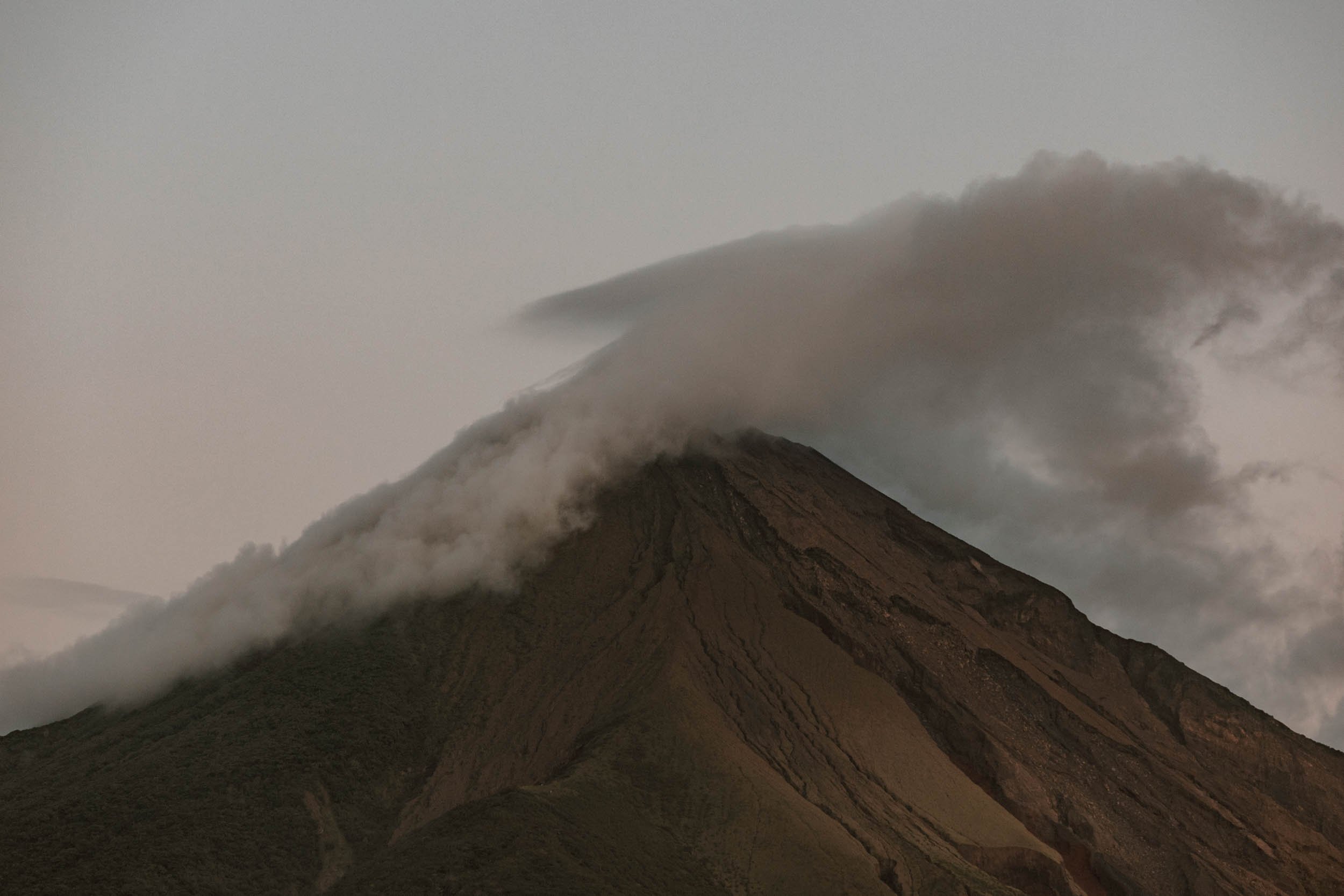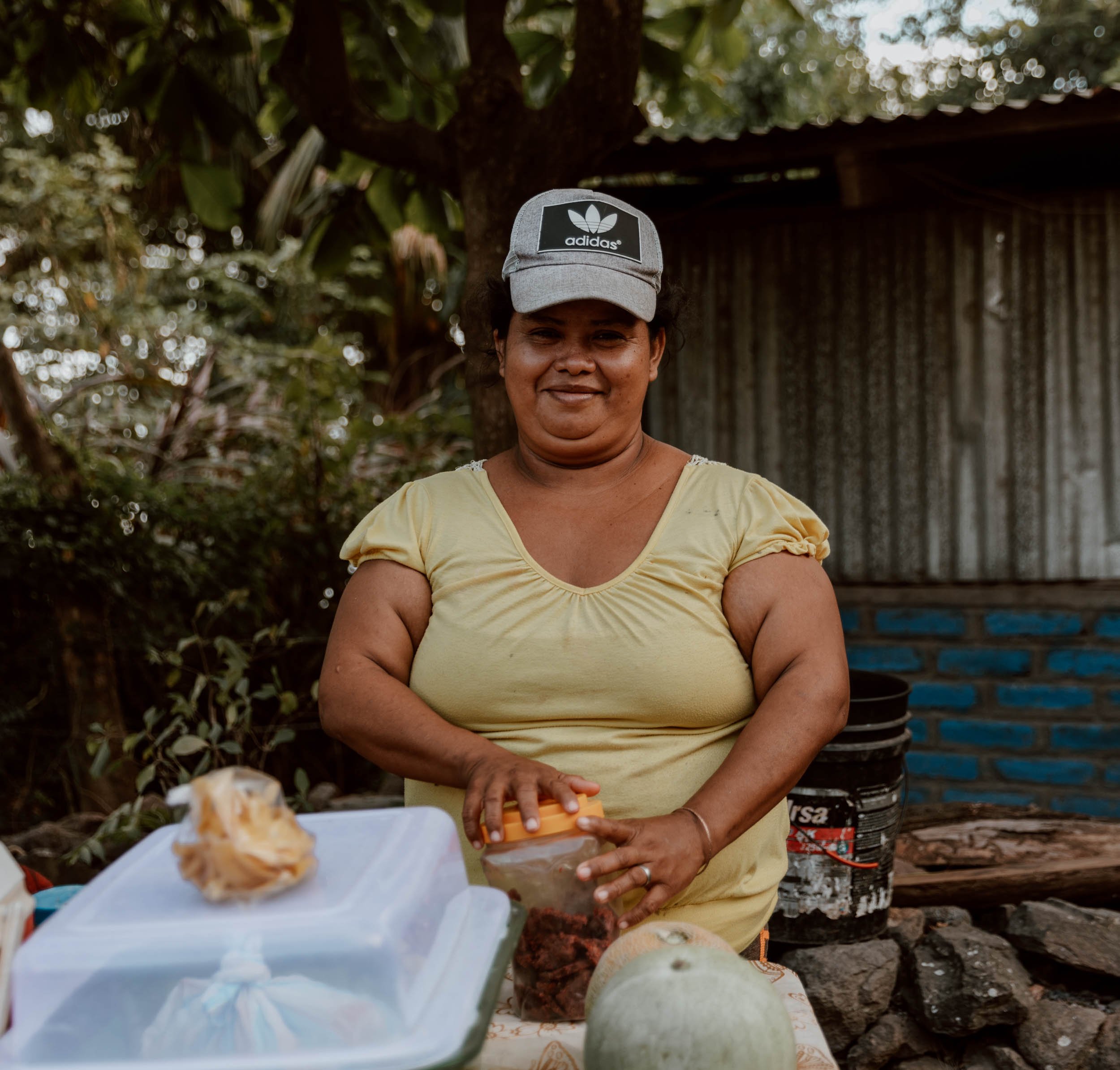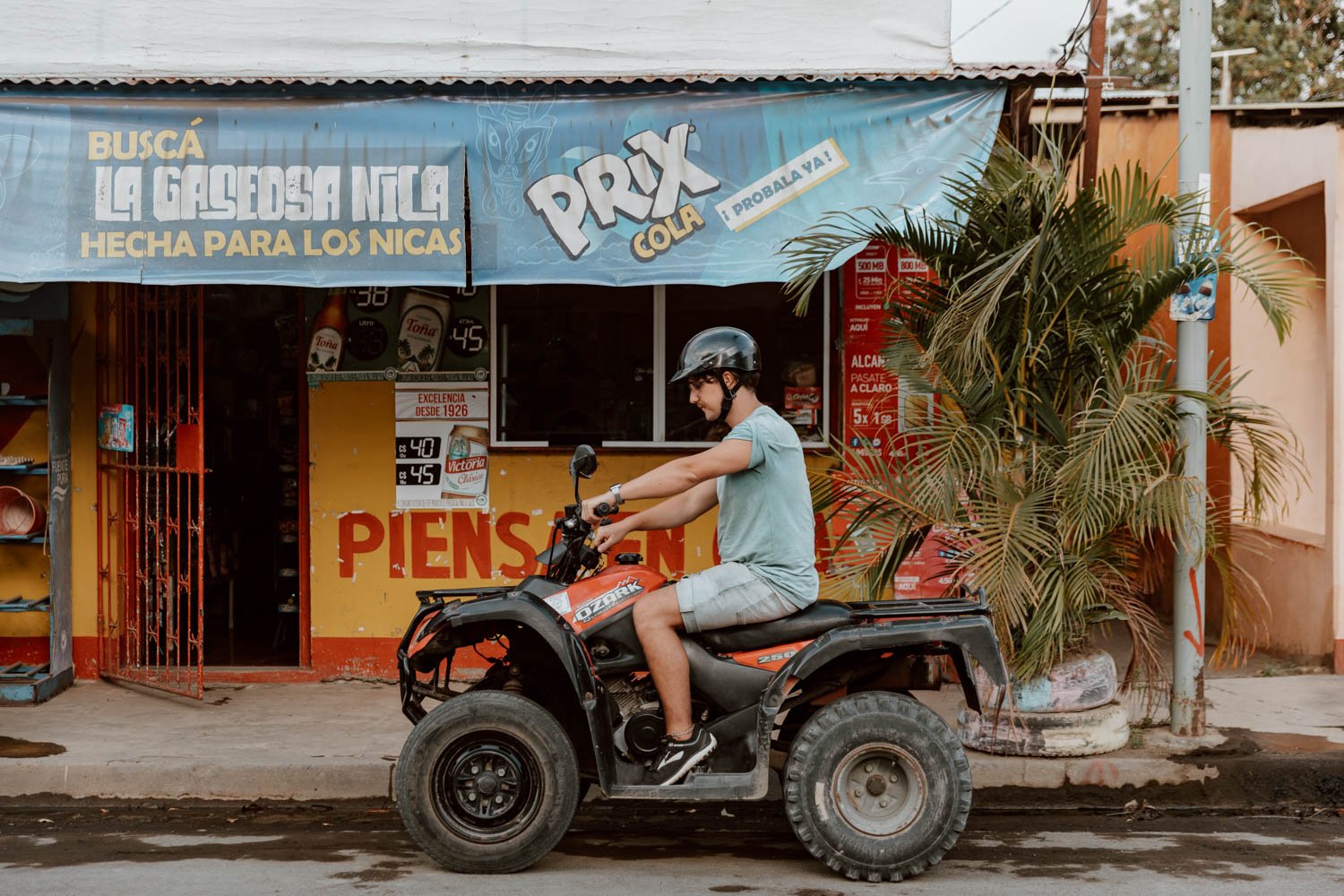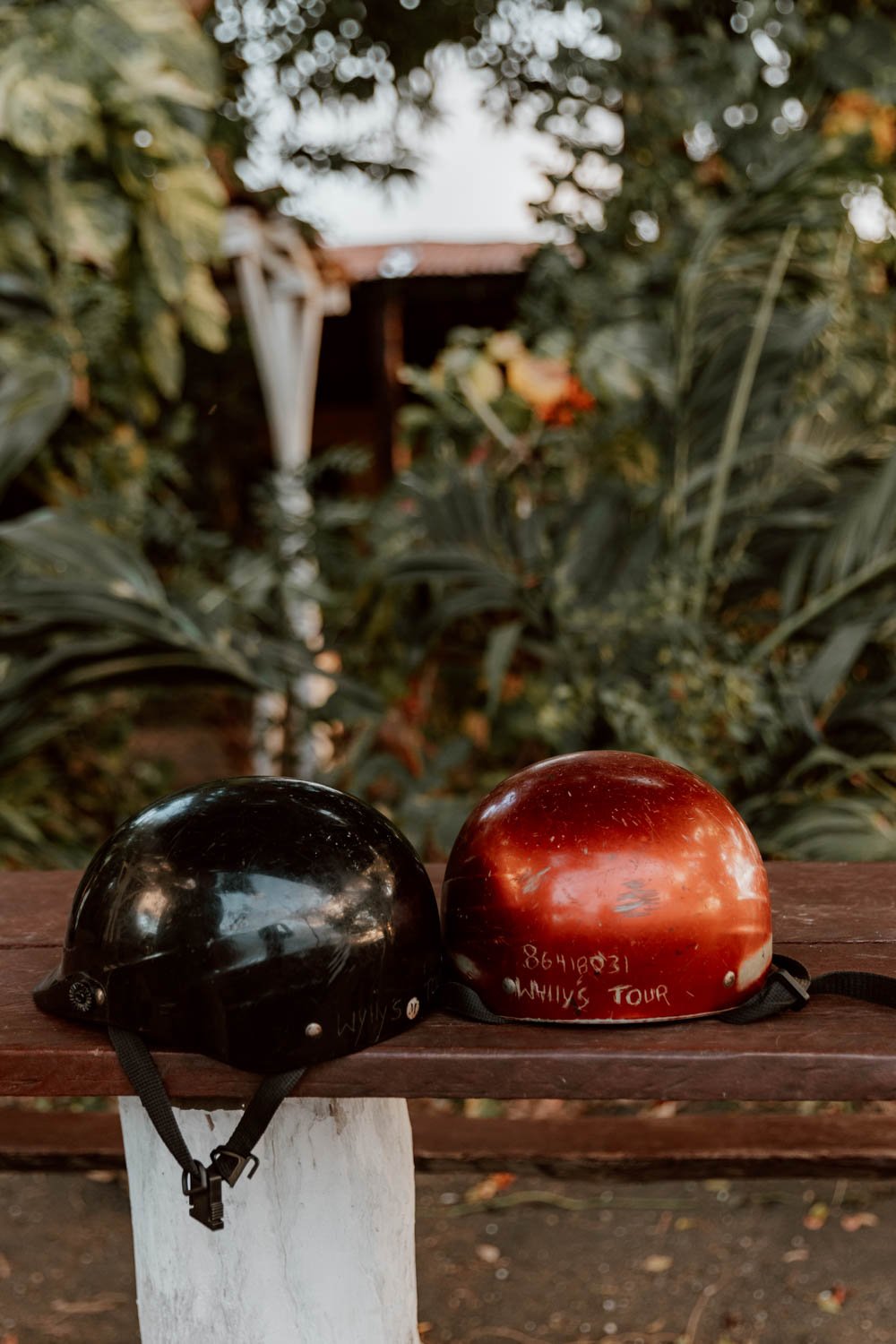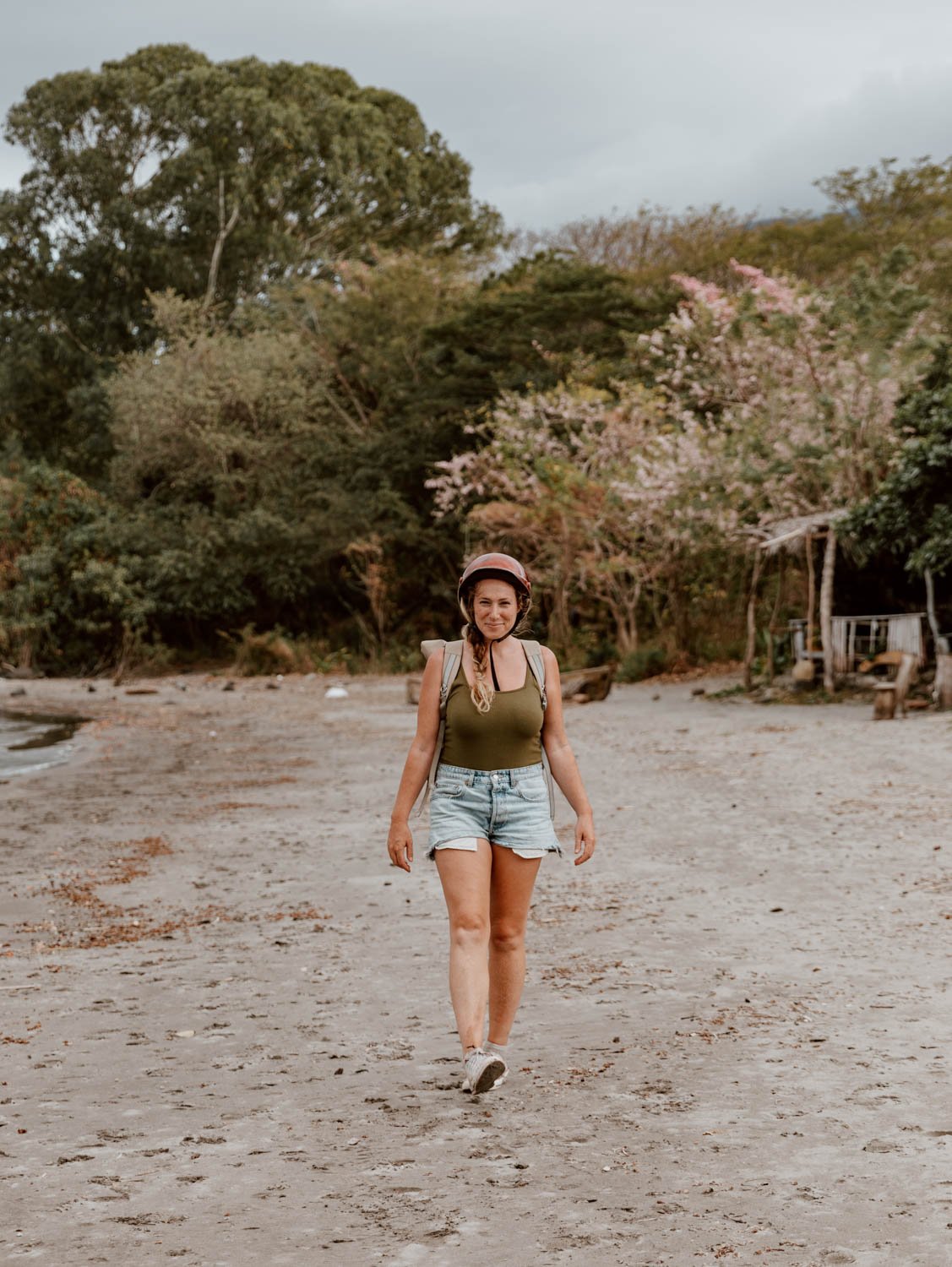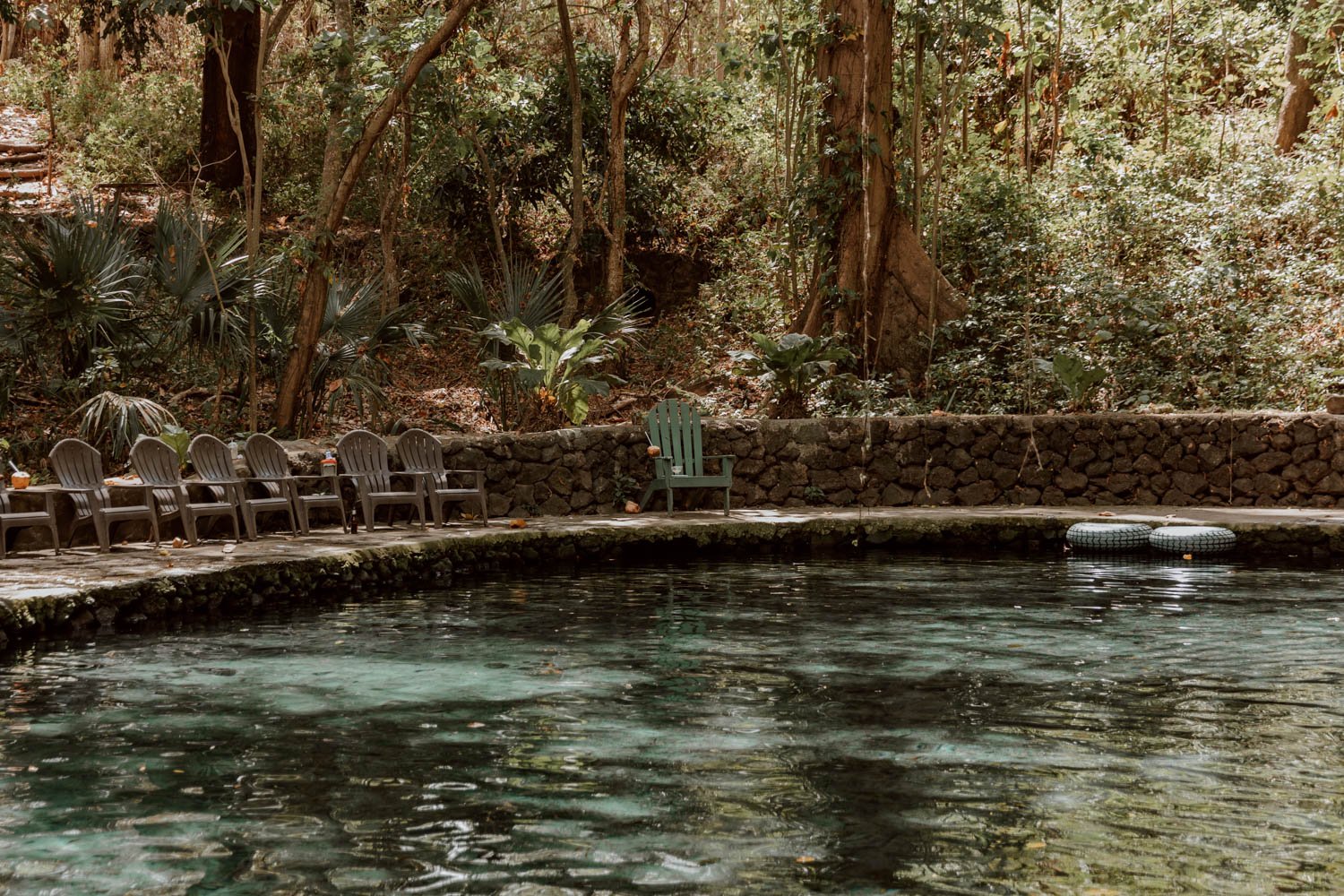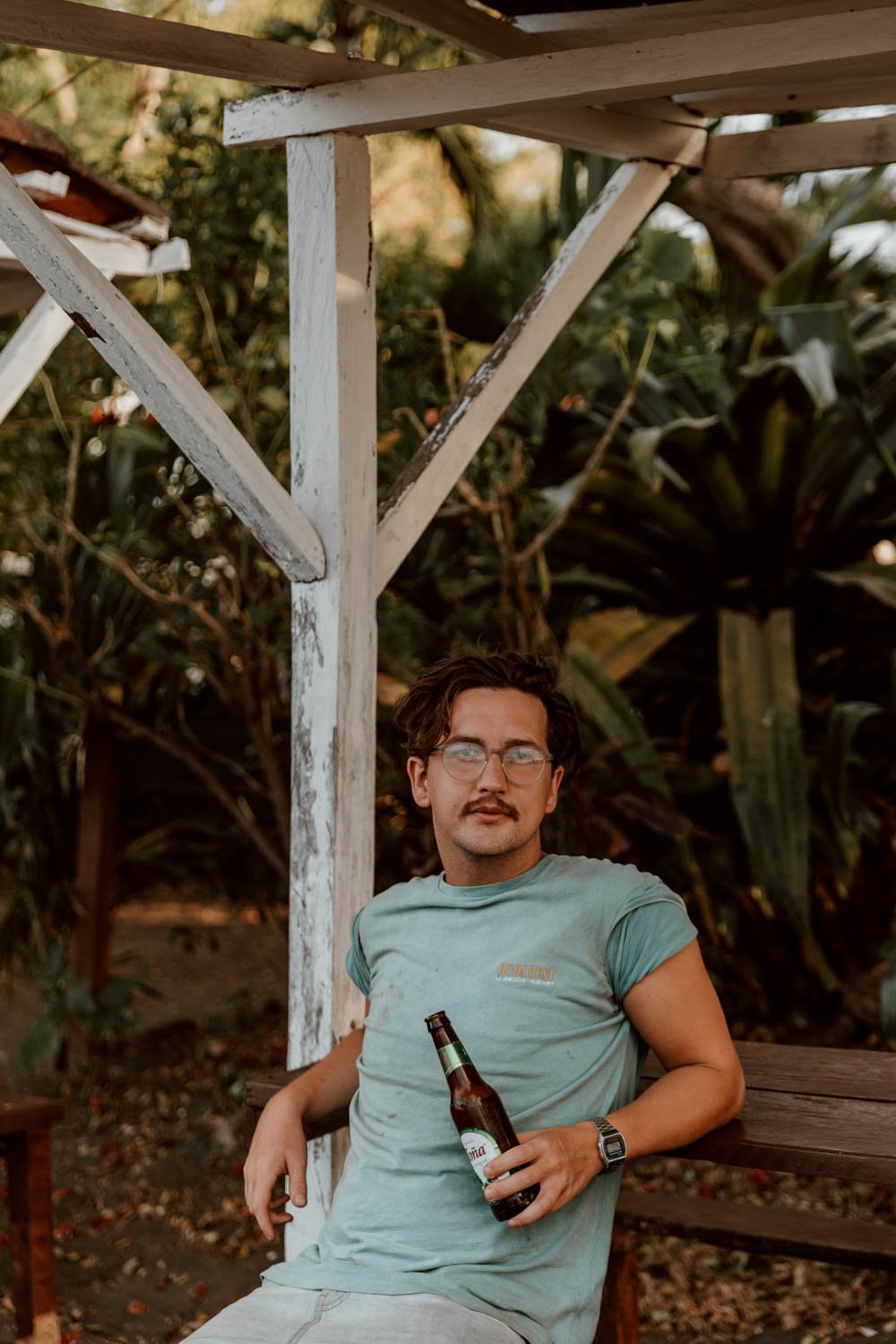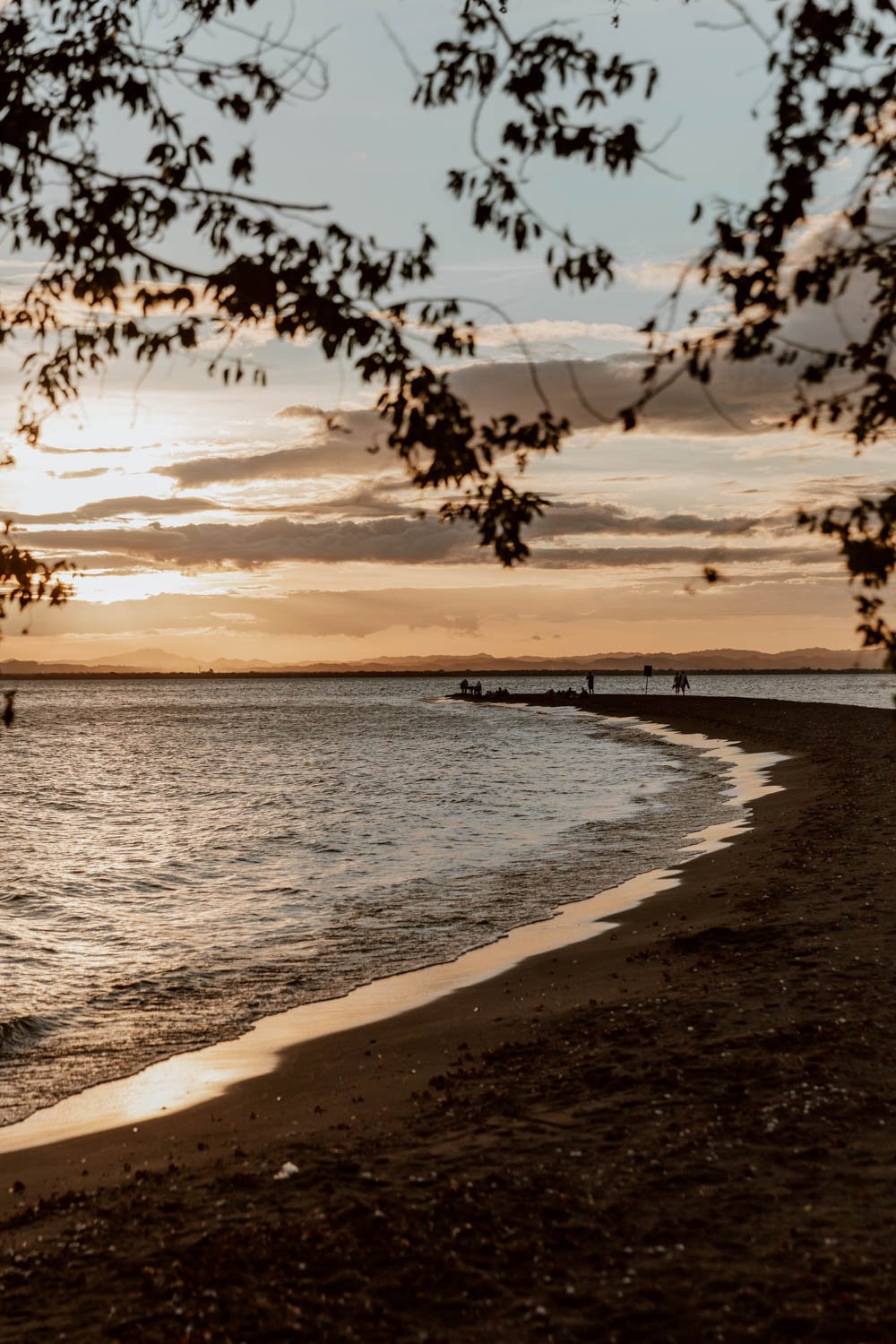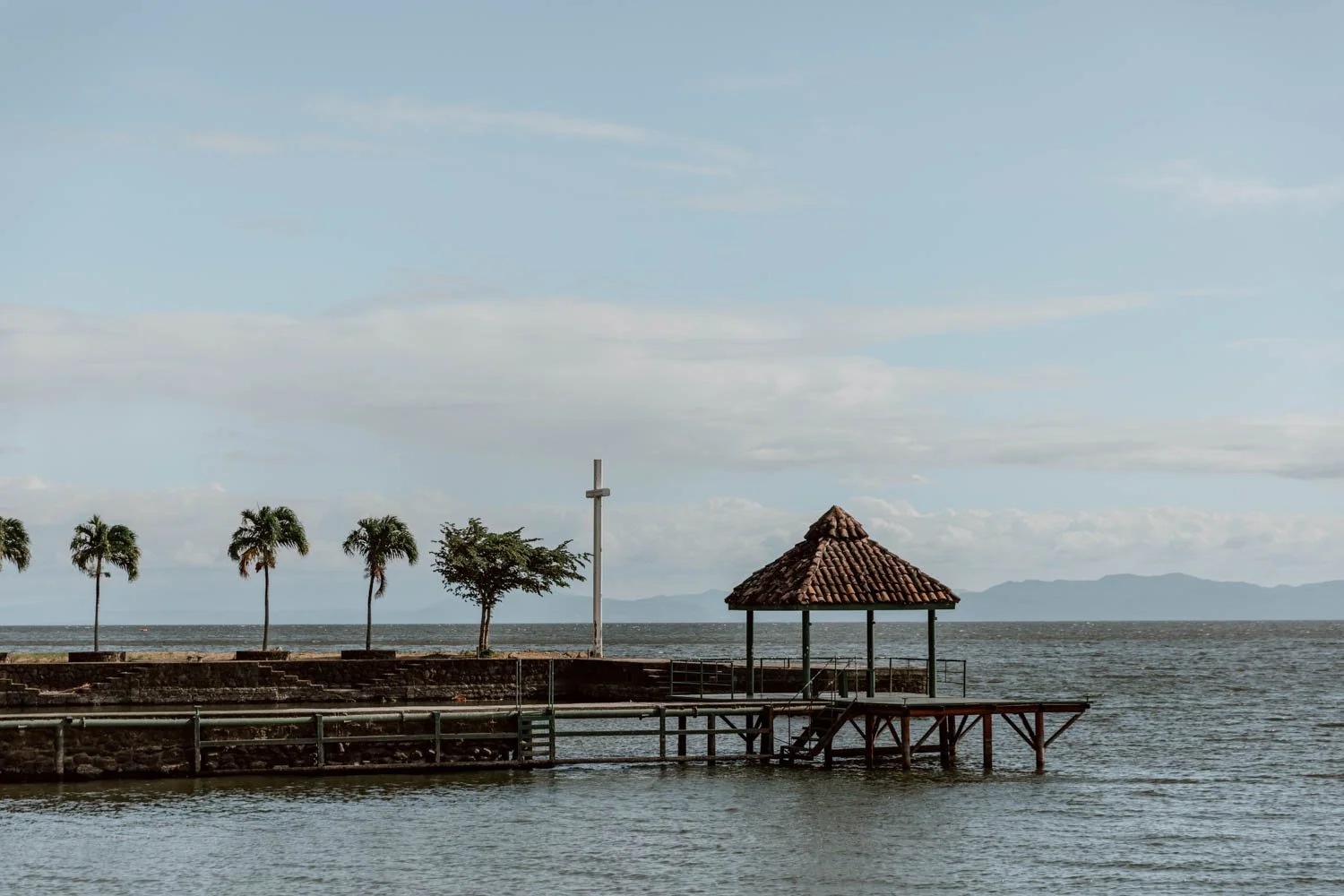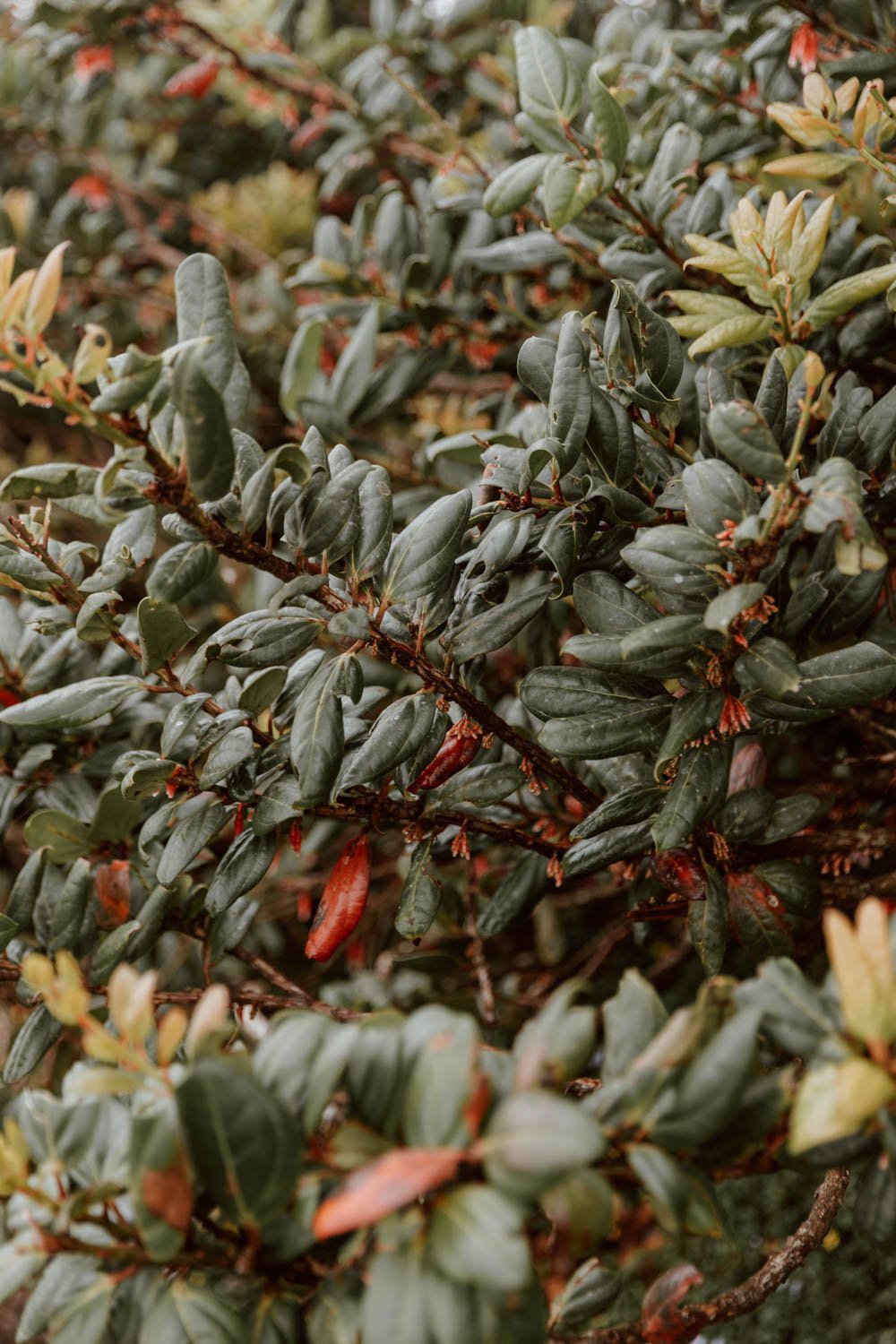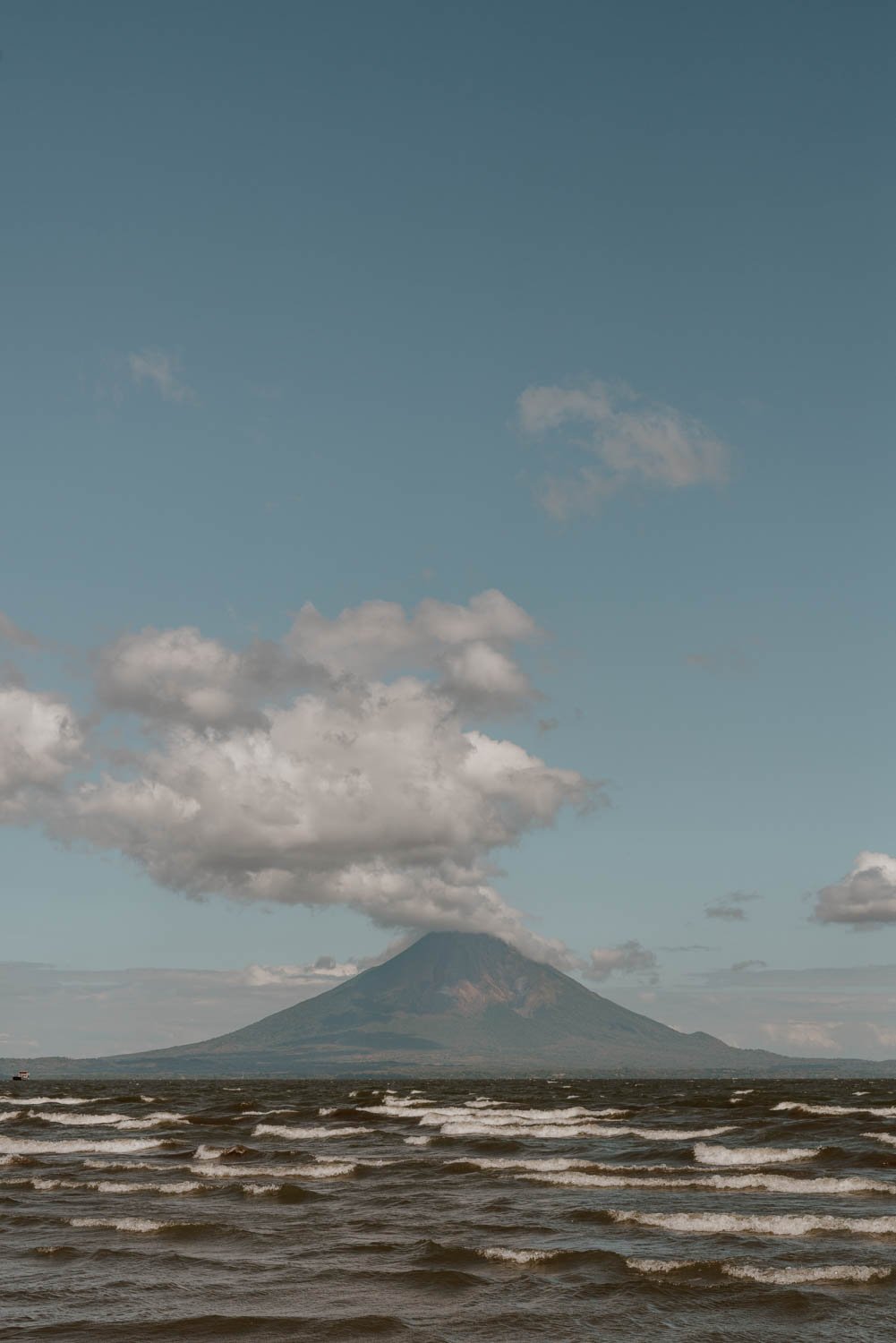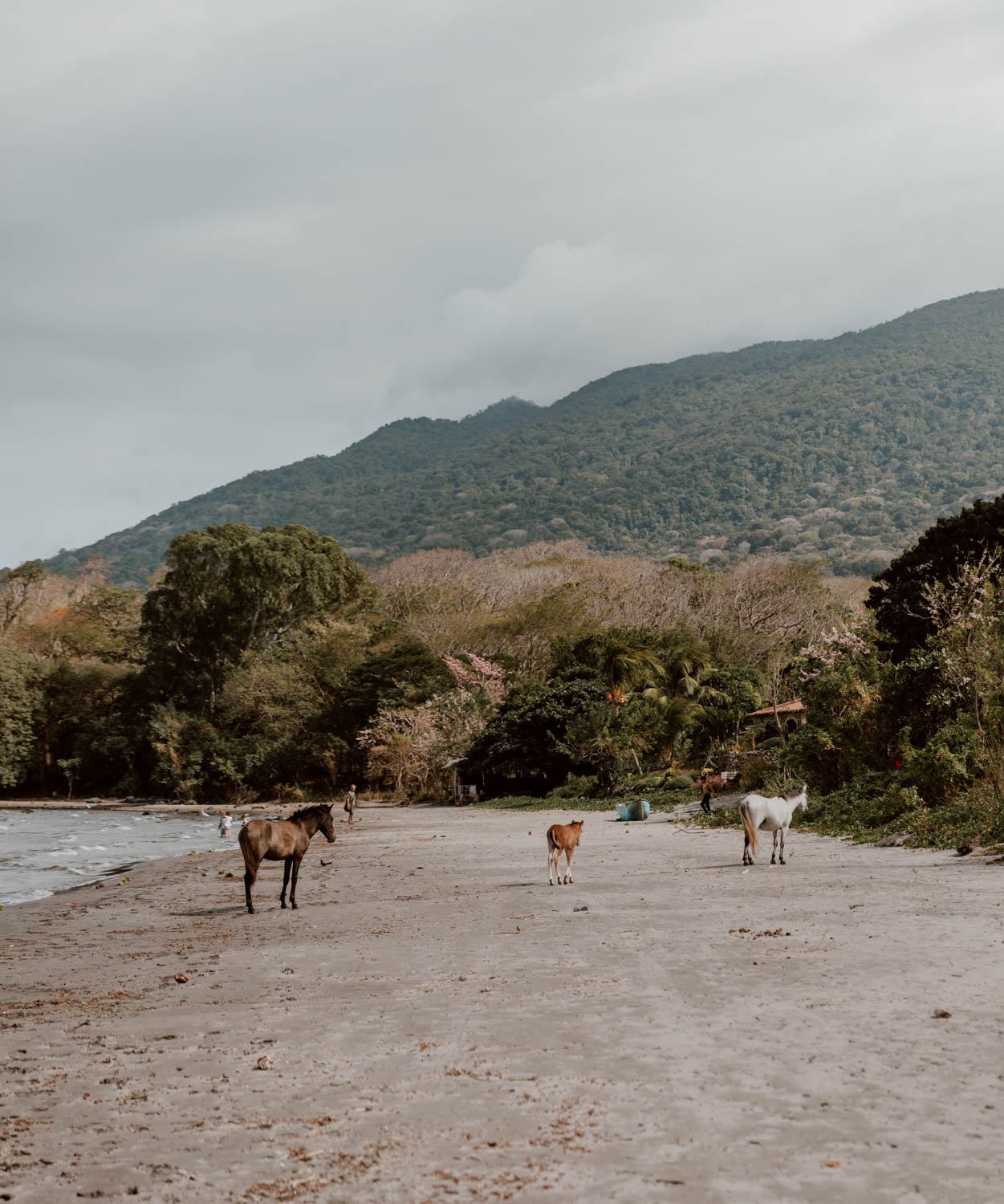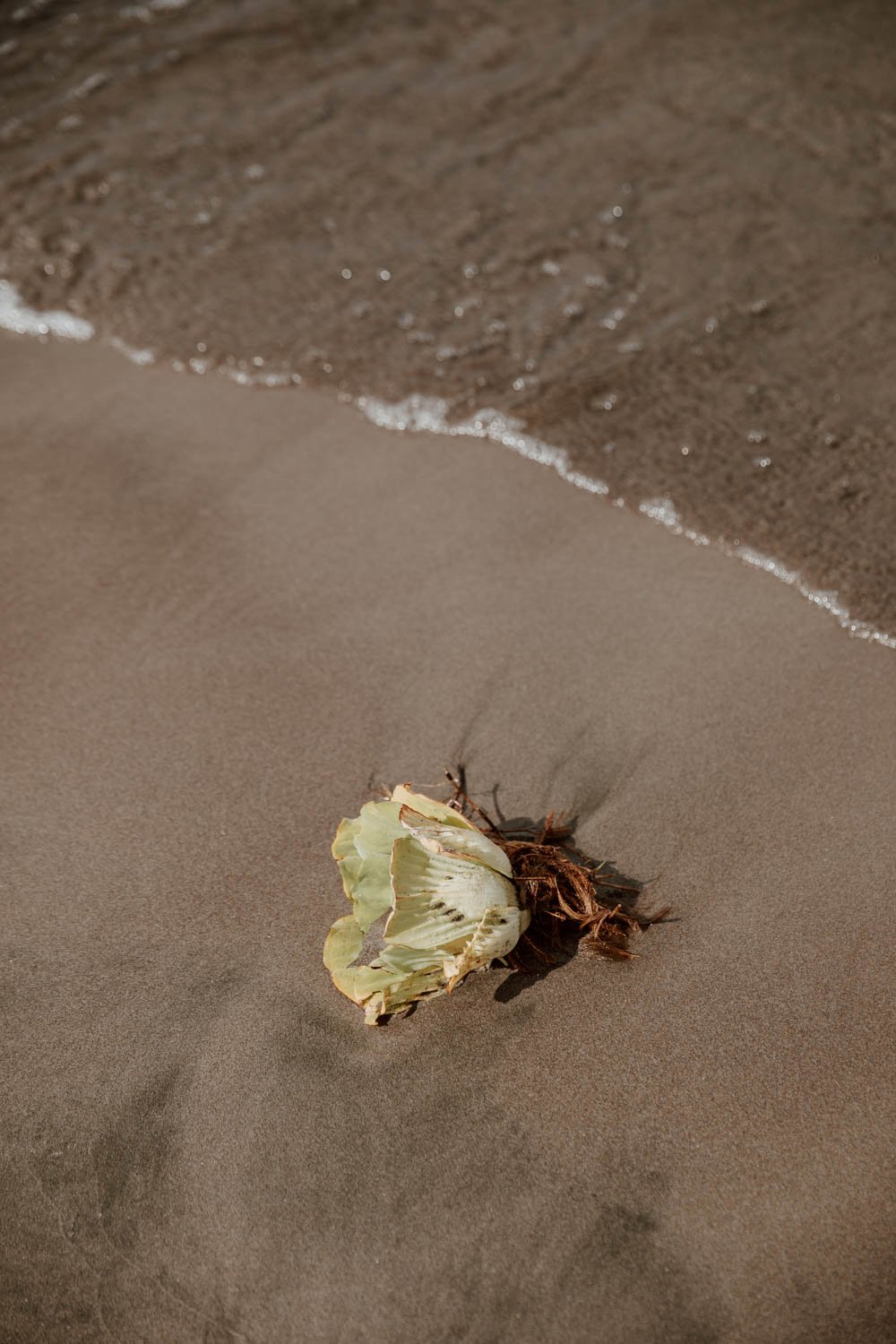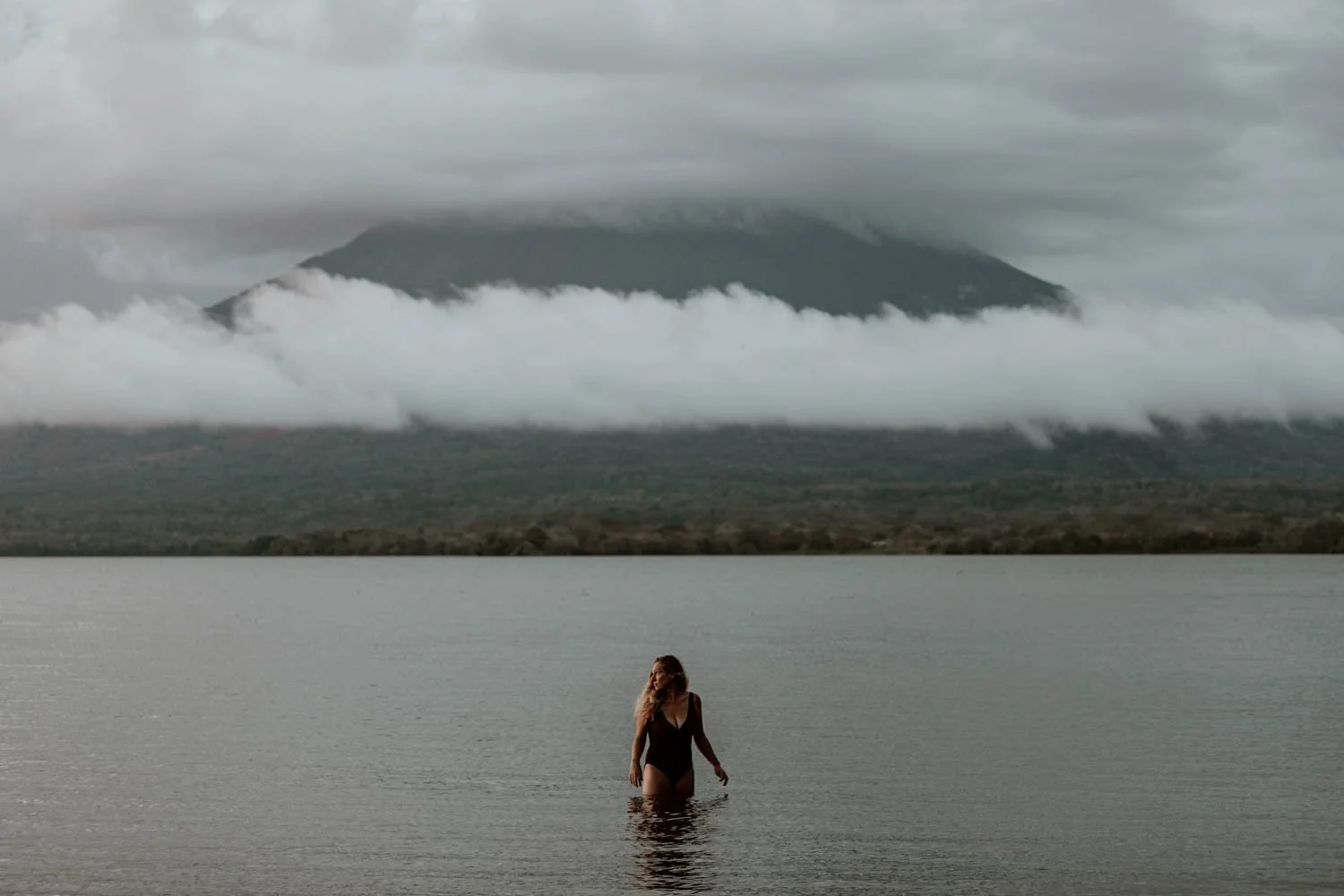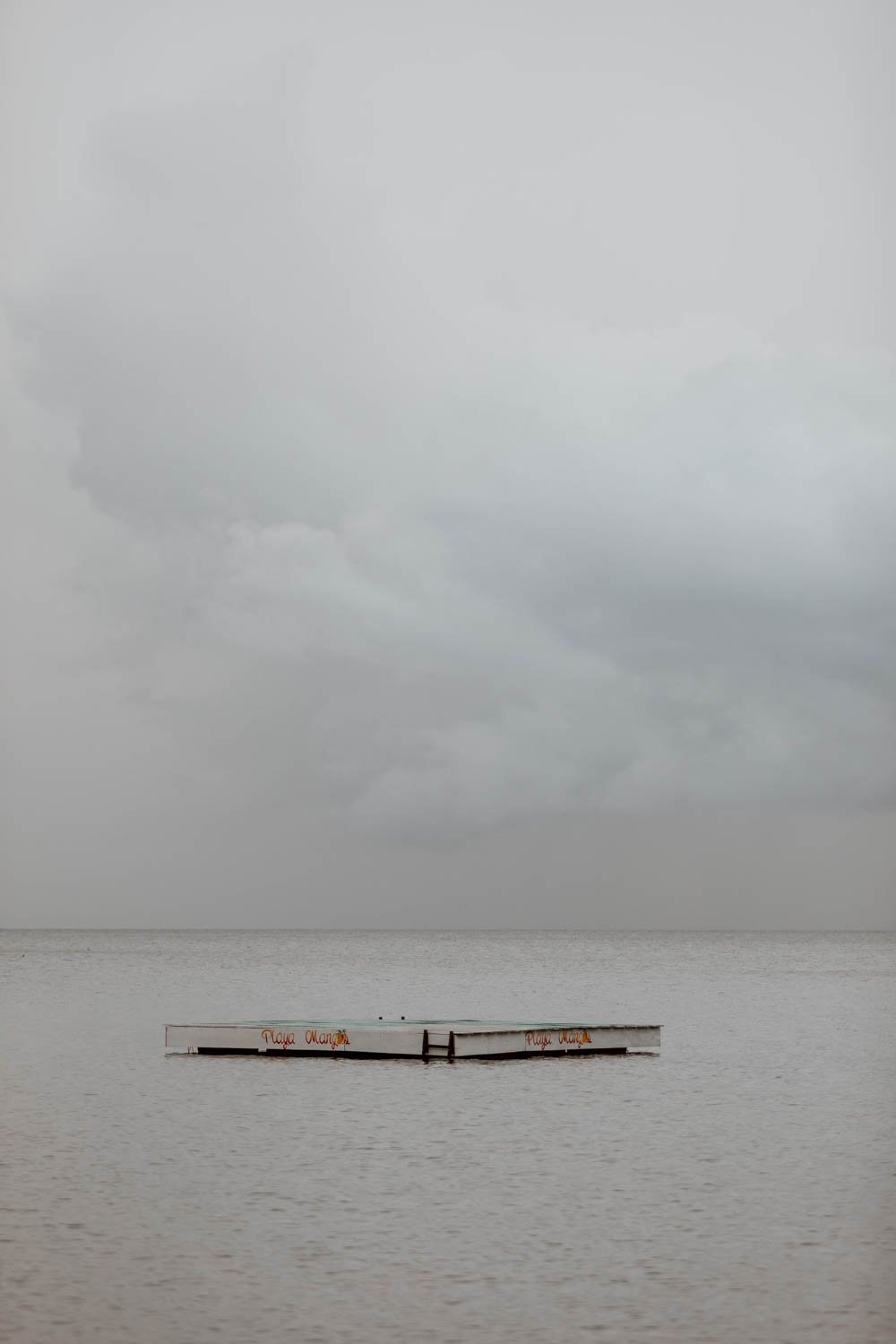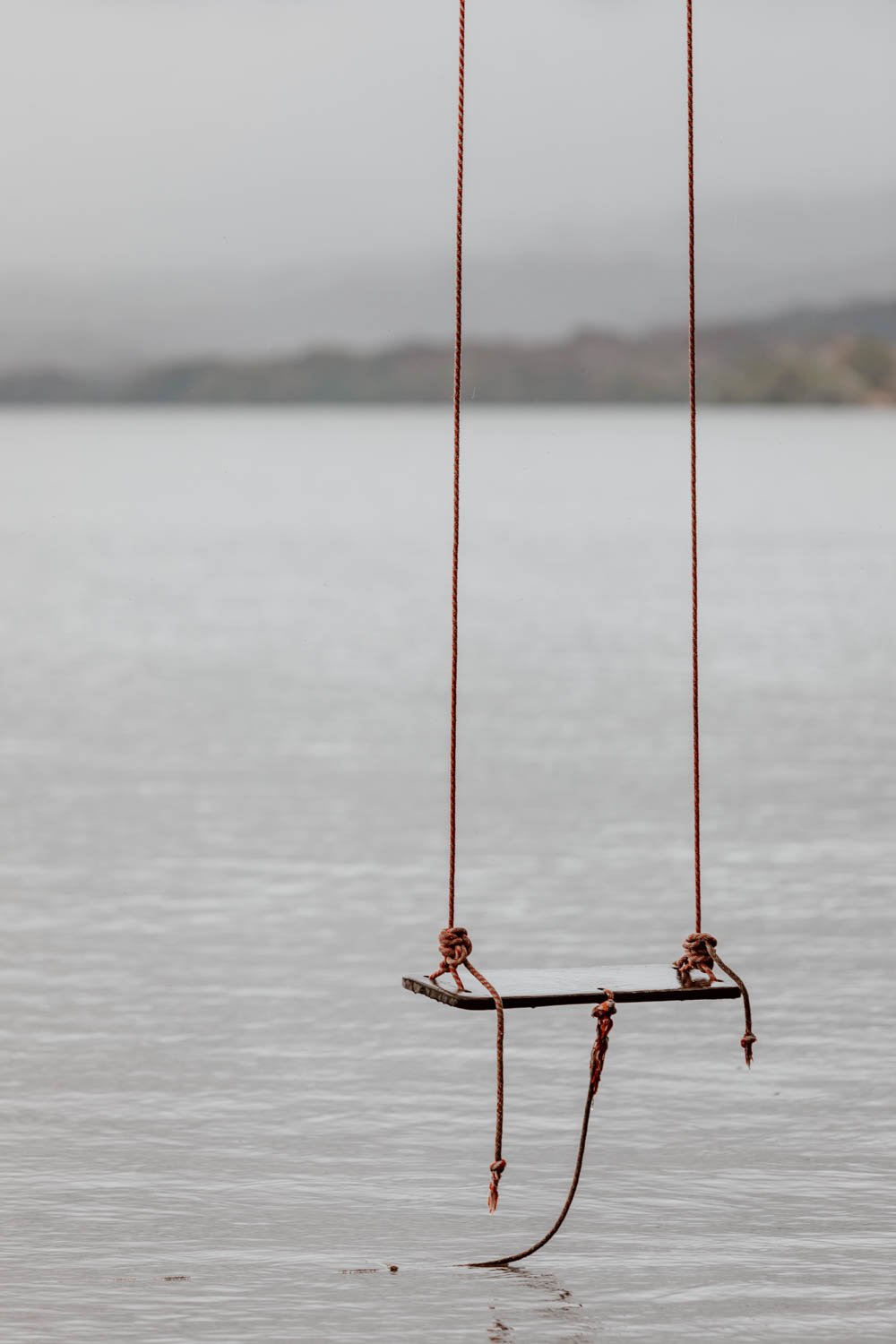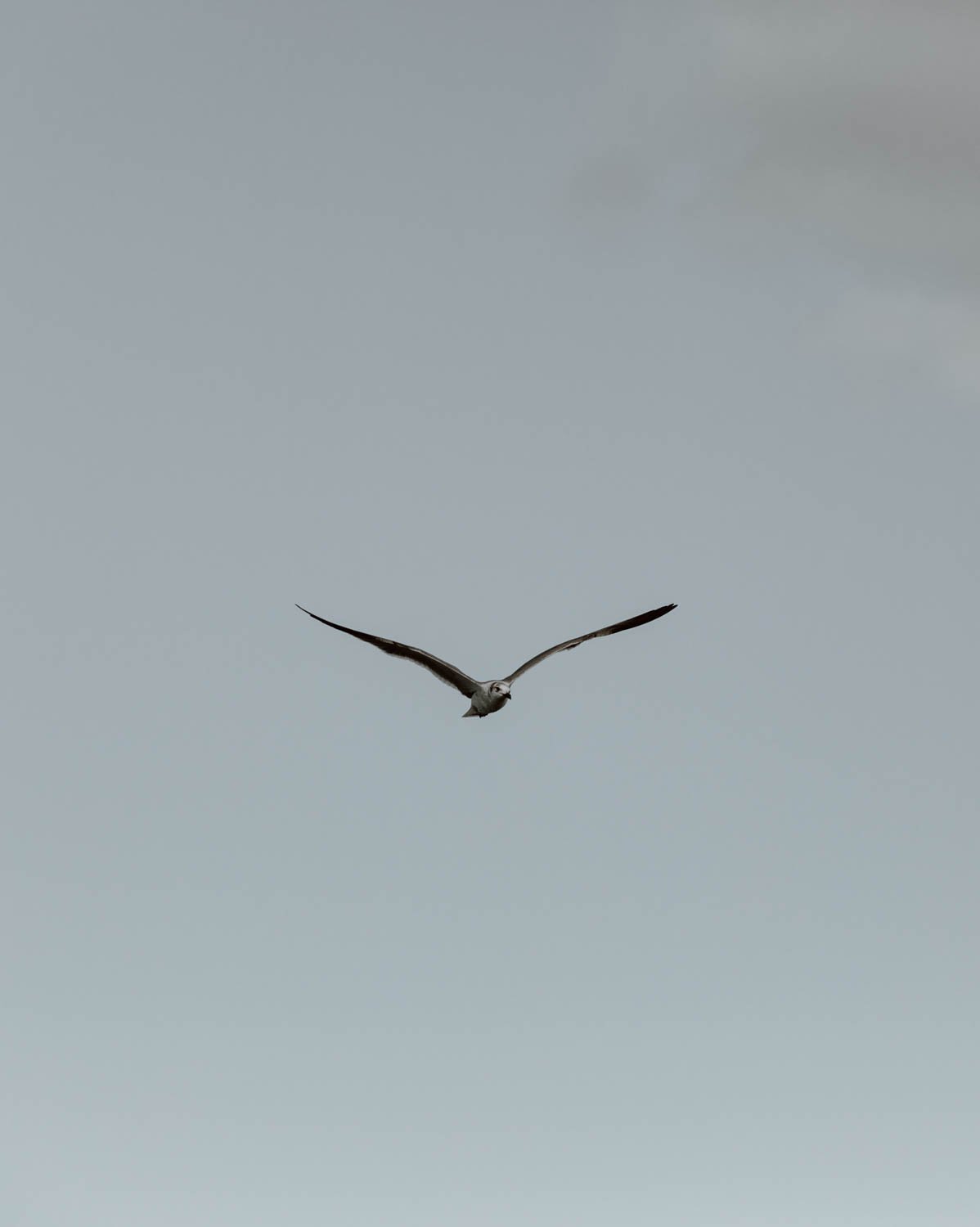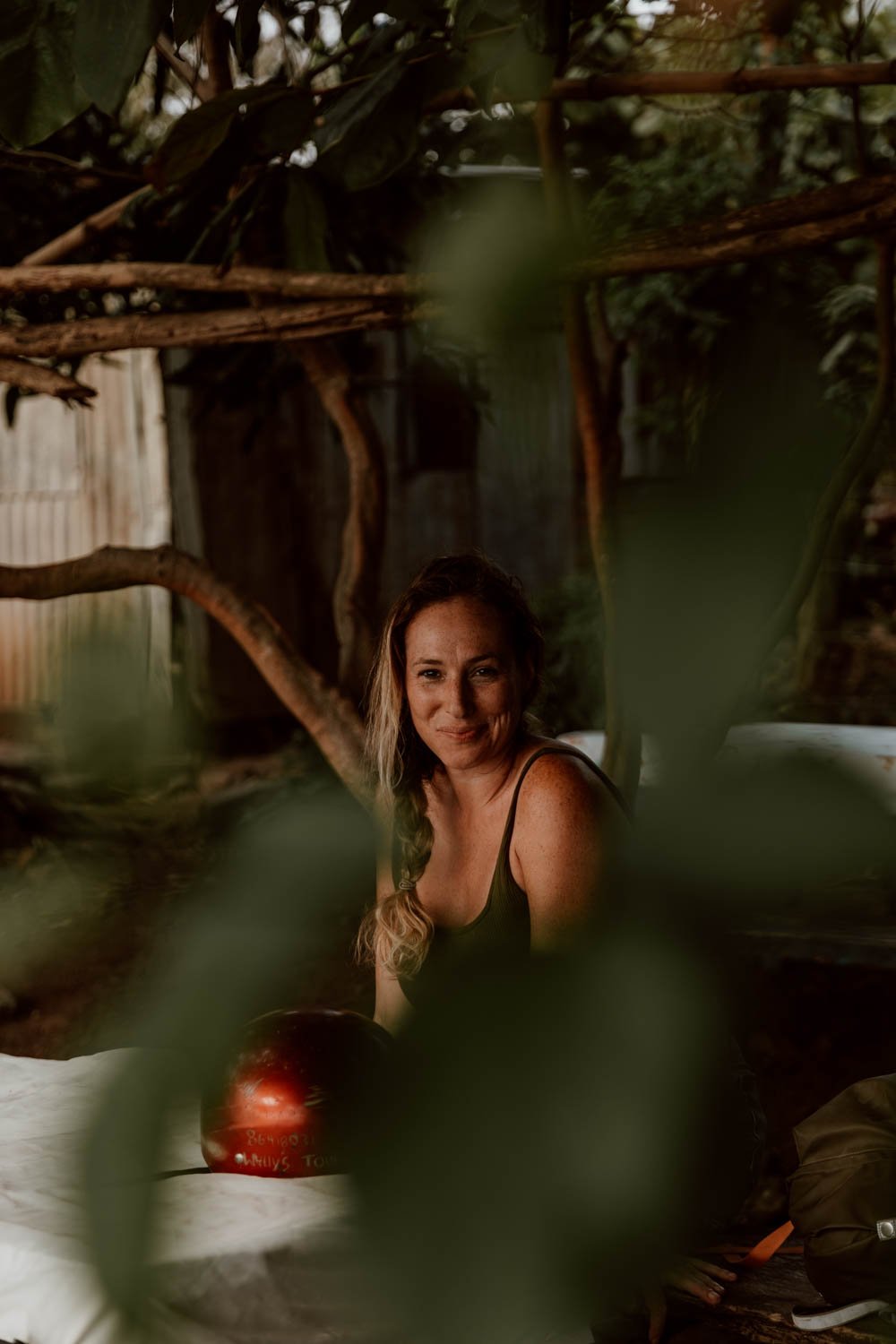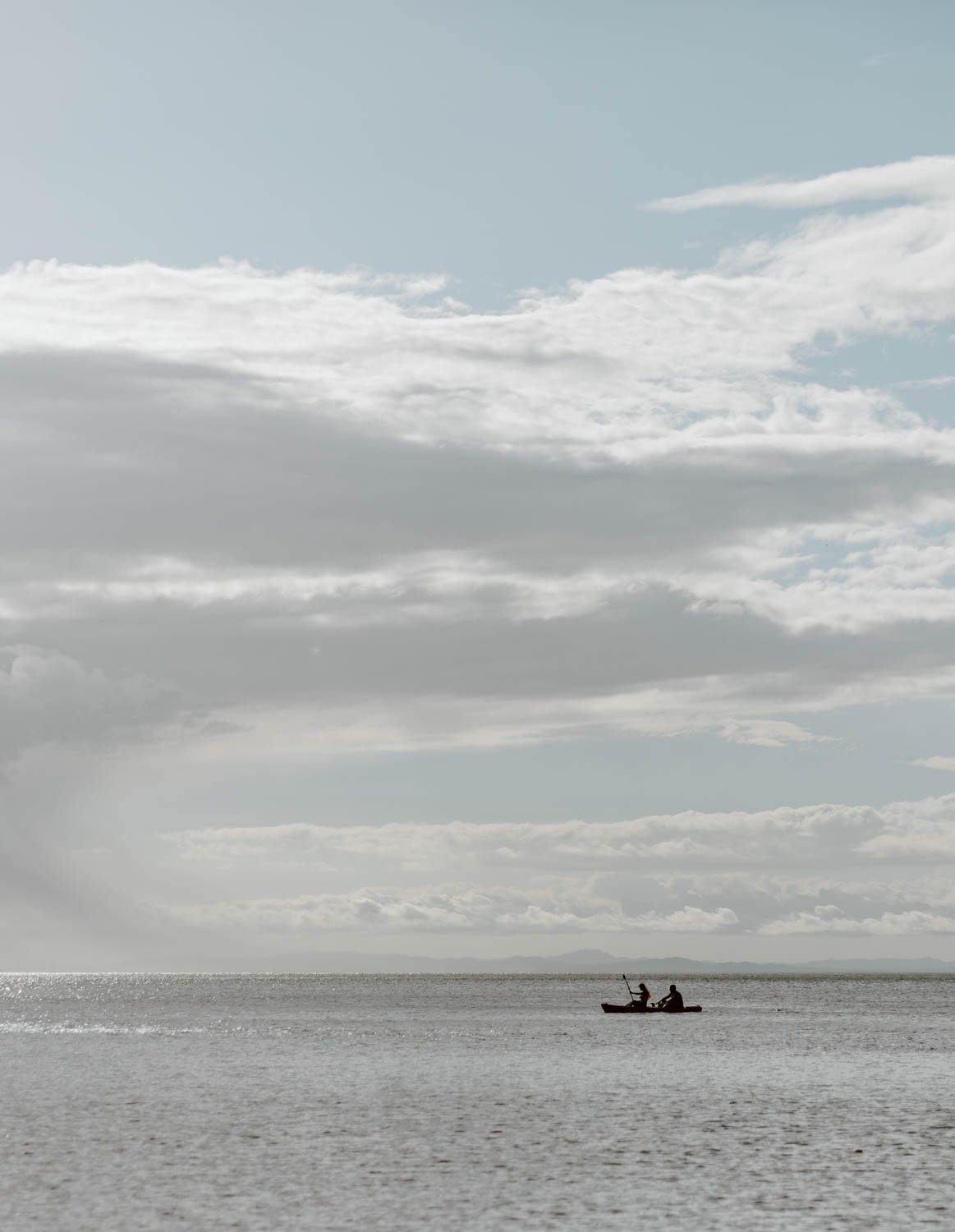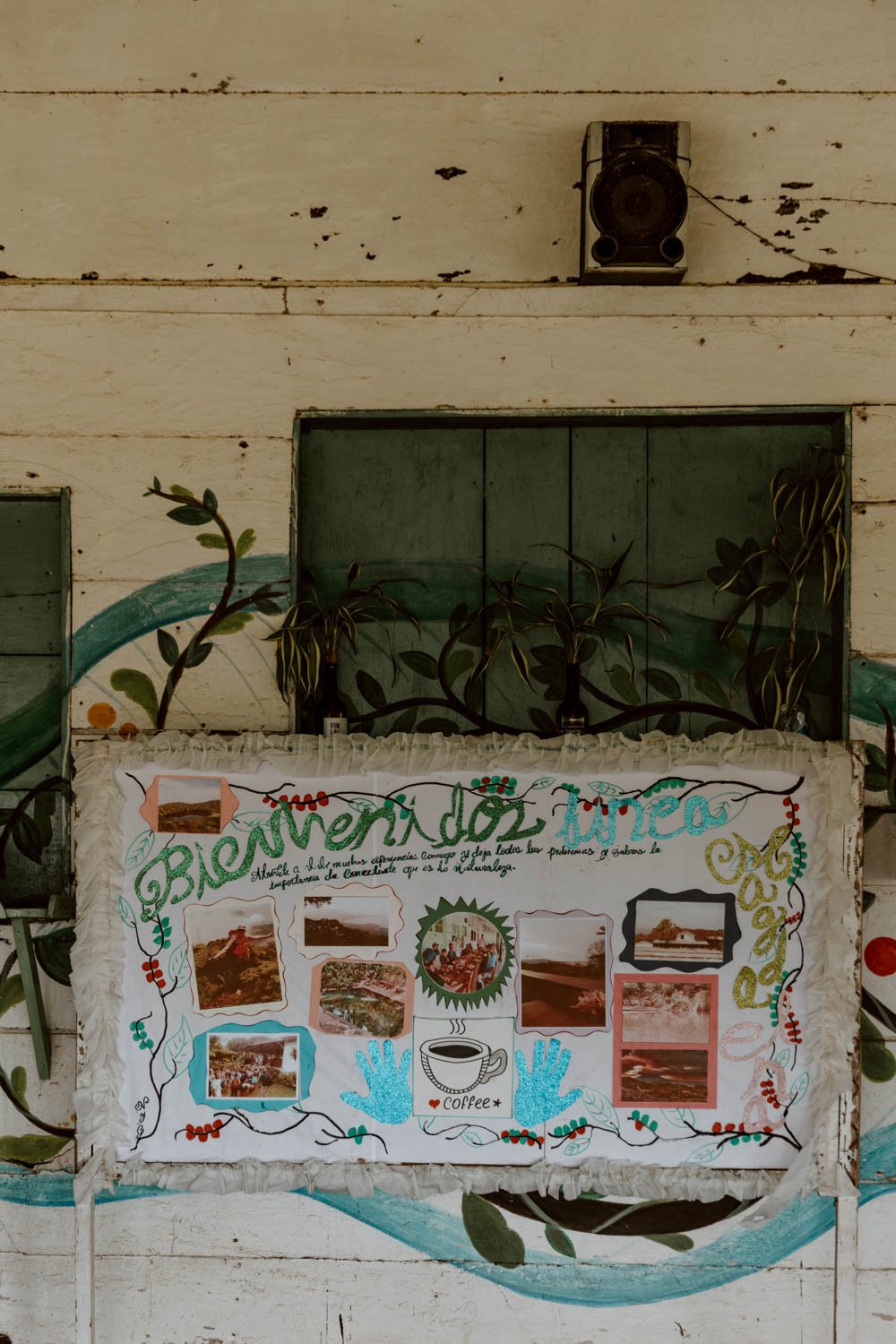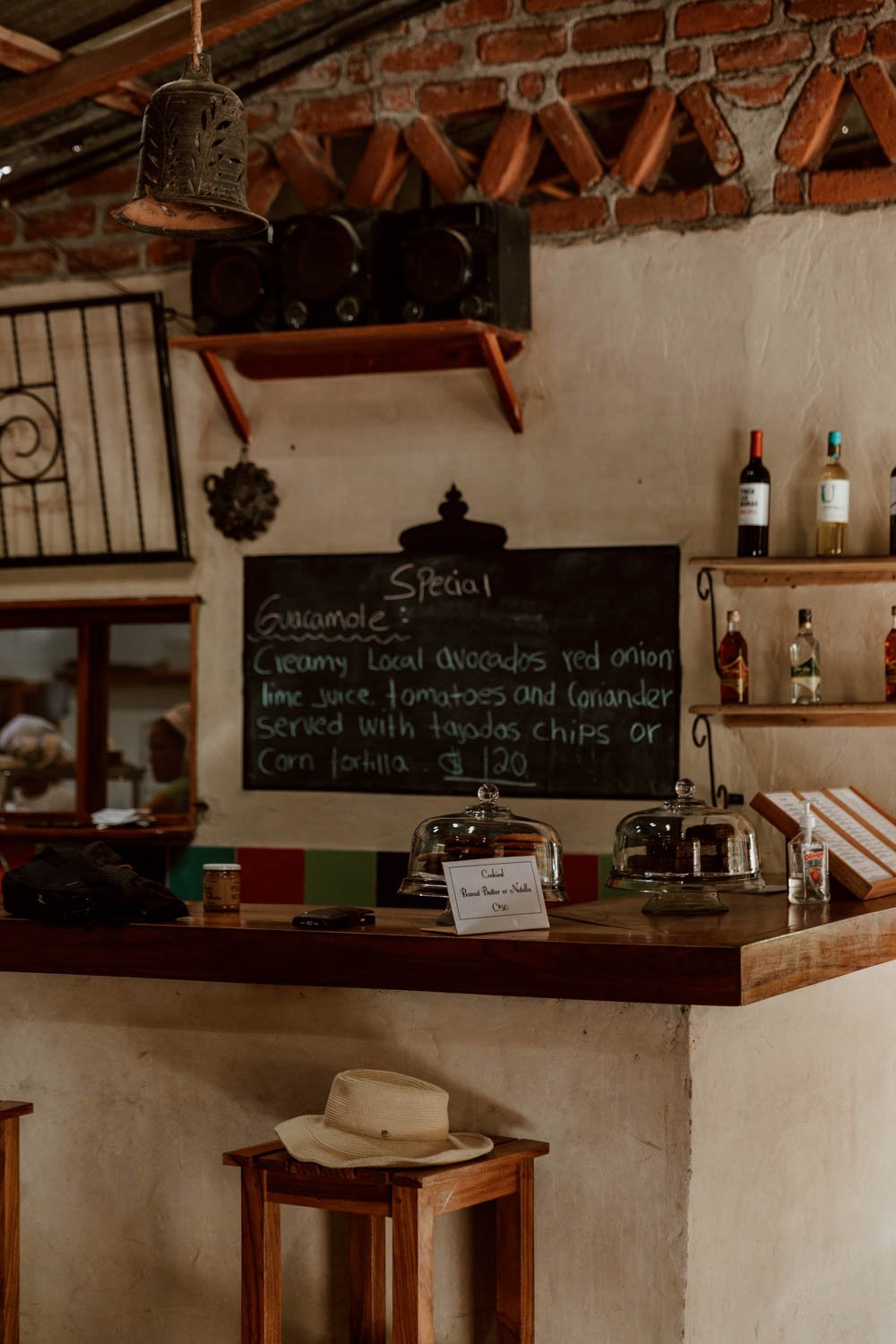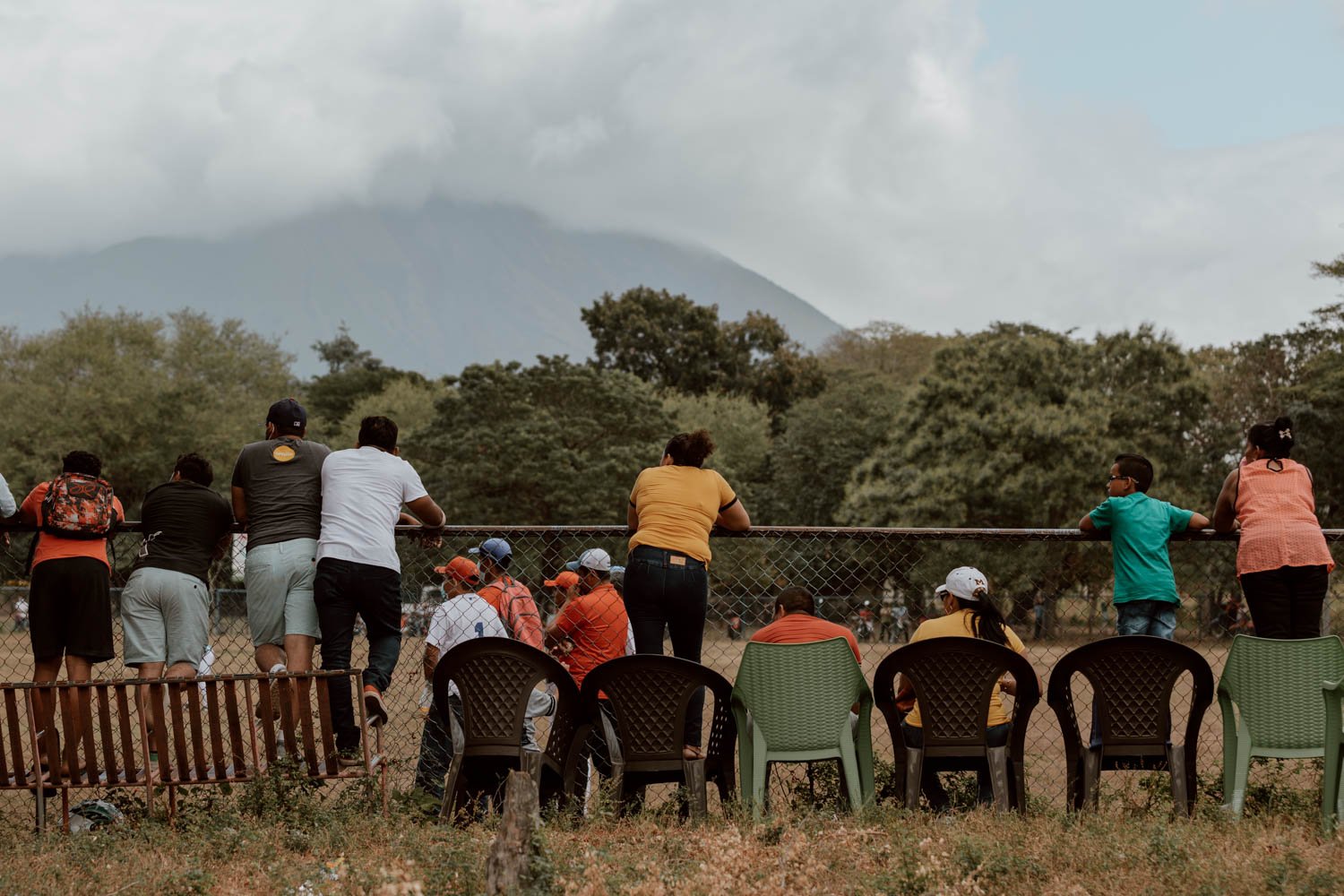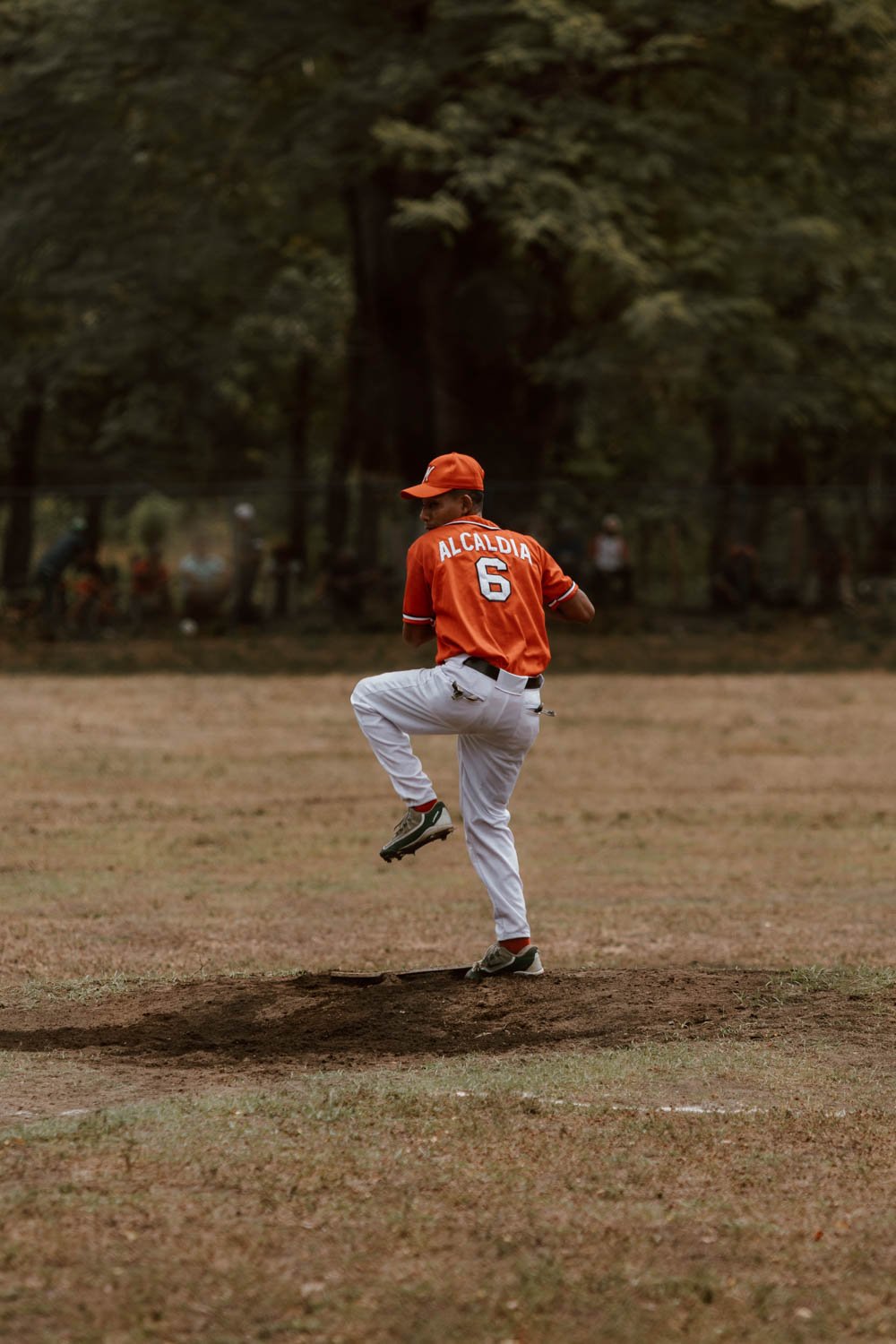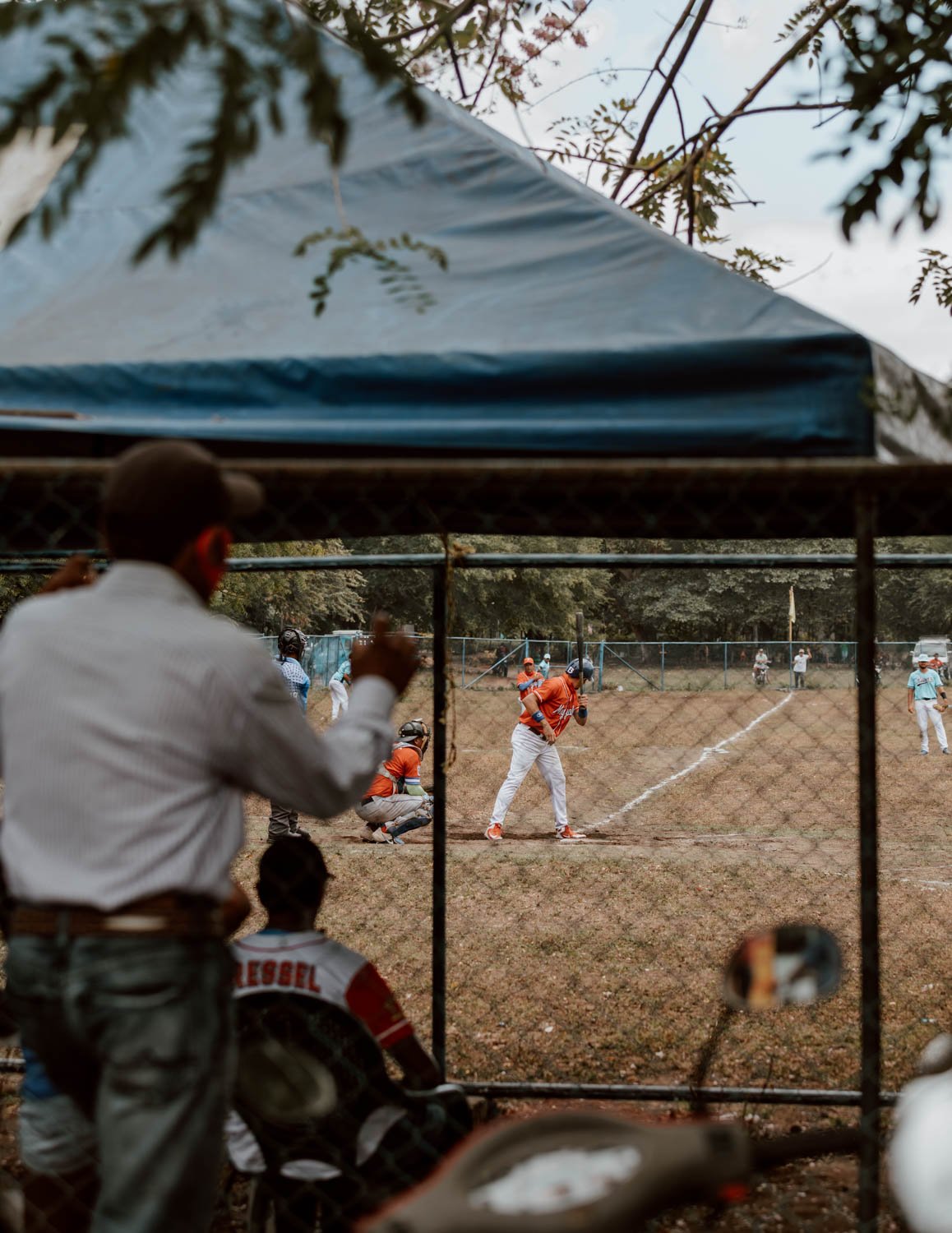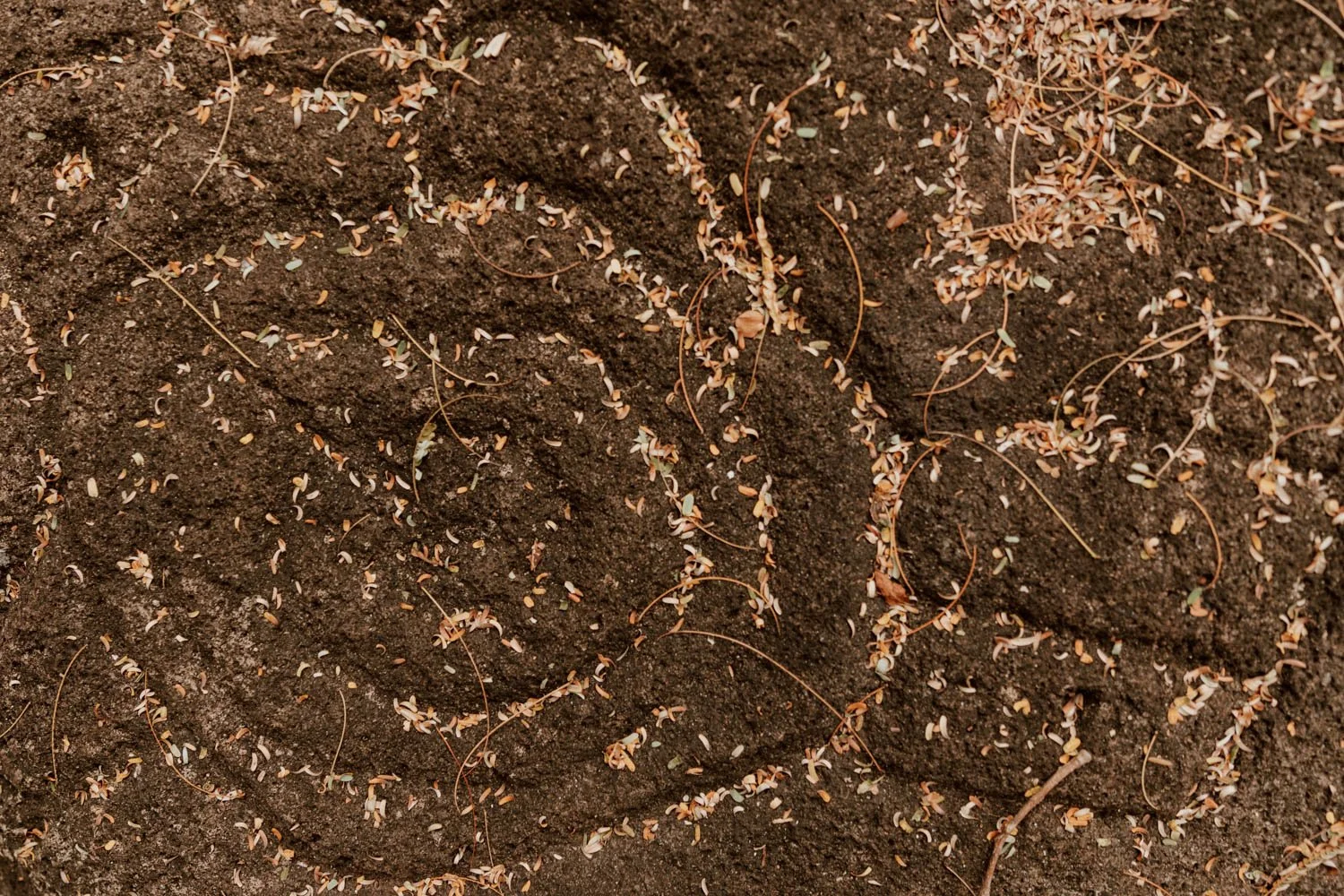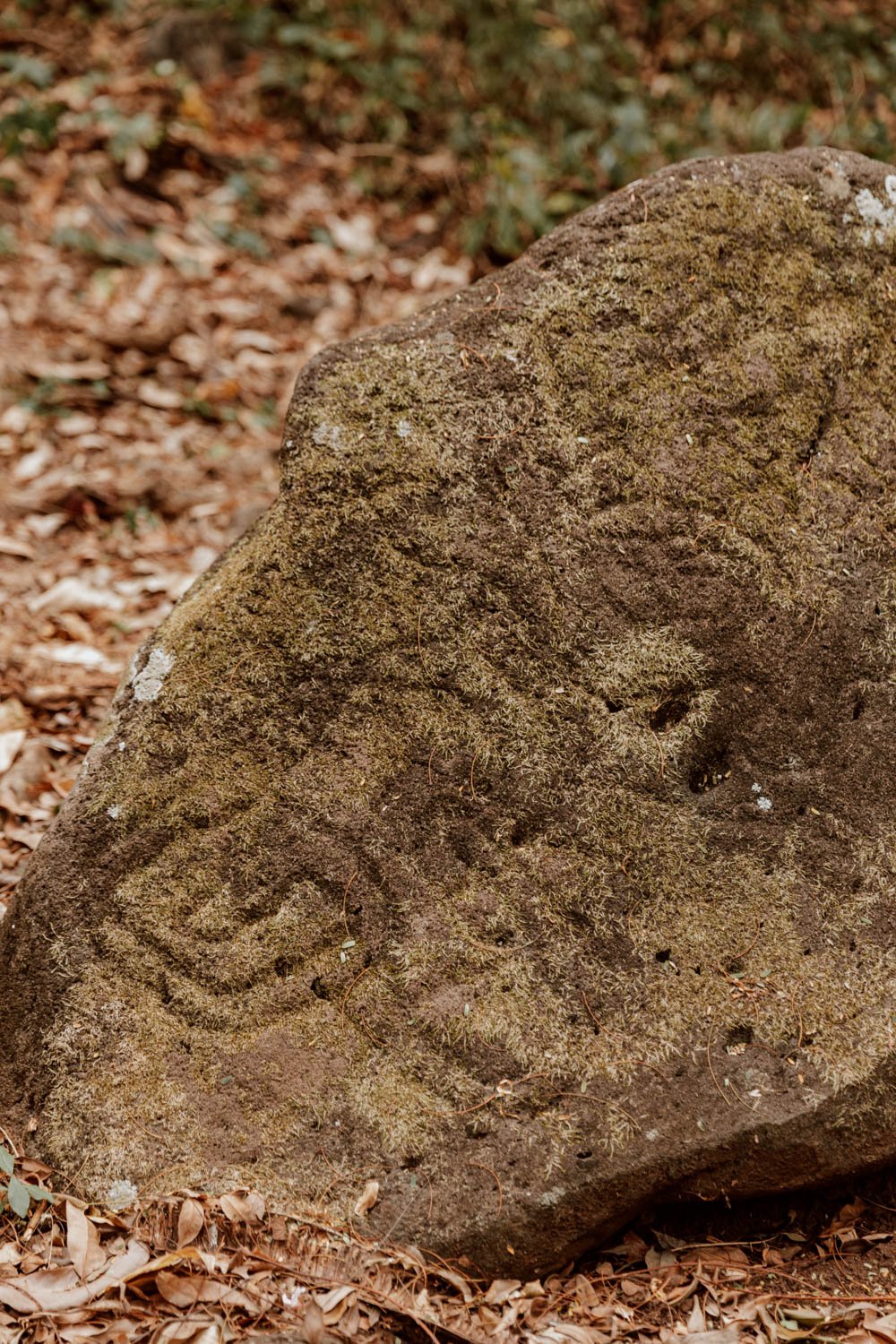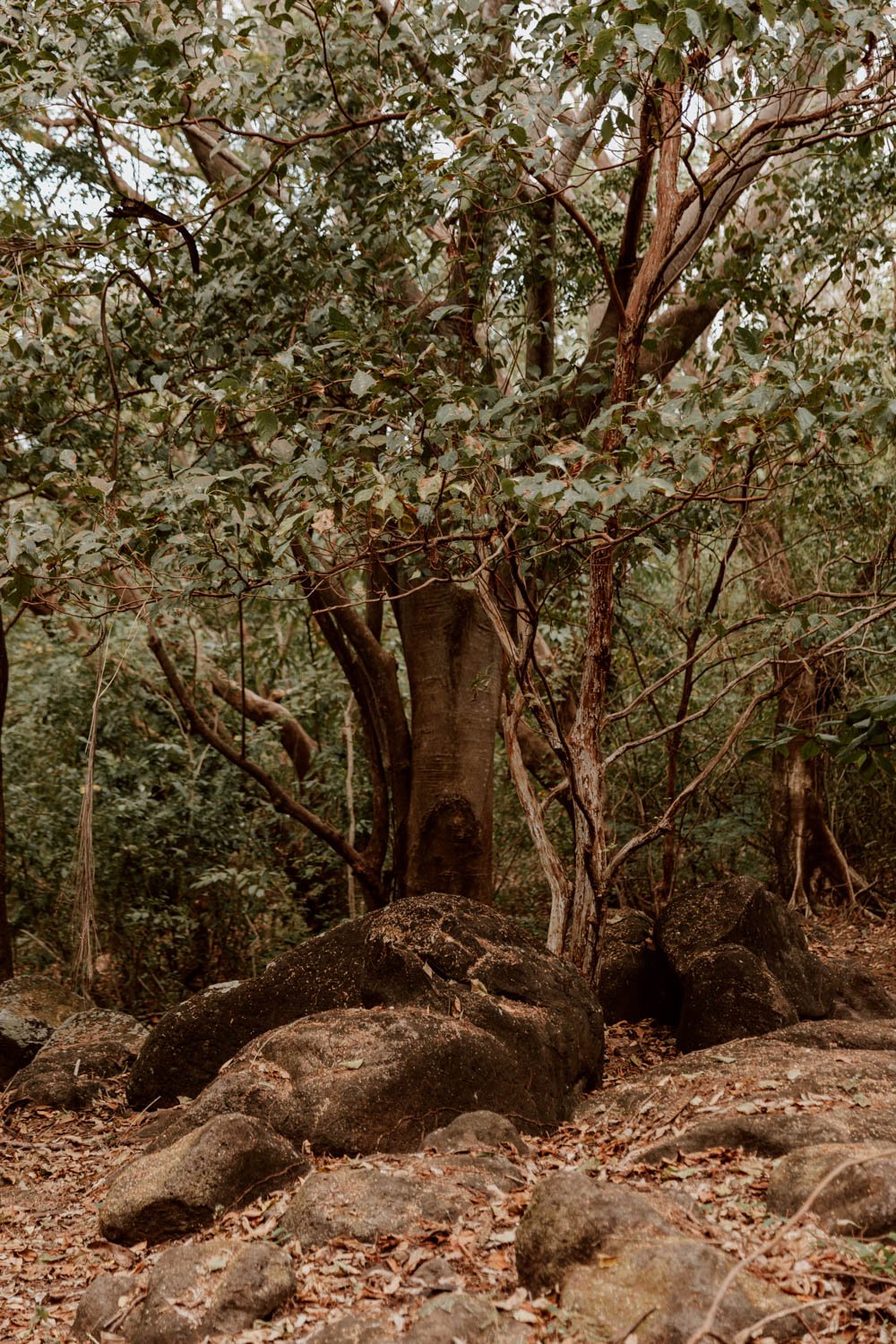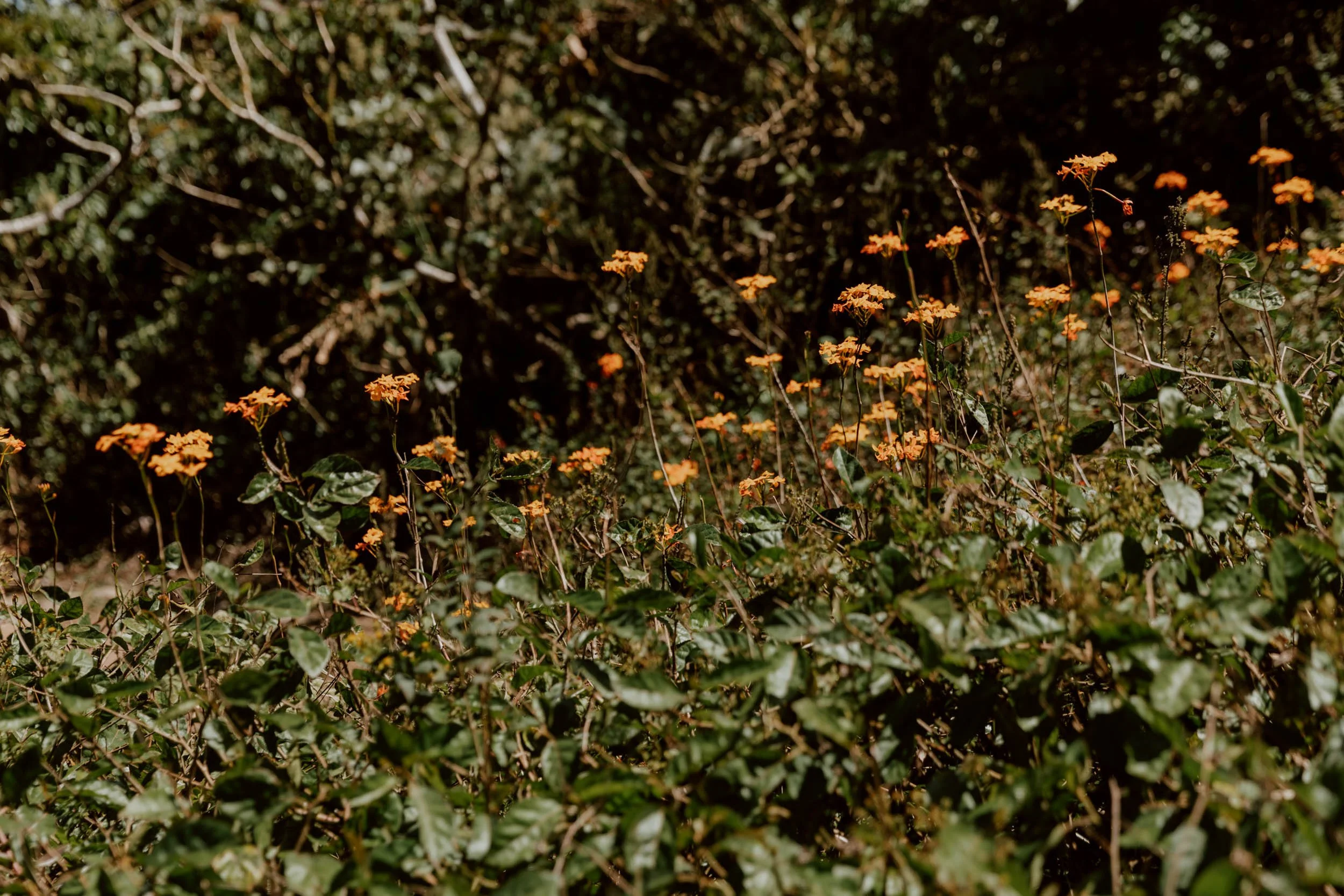Featuring on every Nicaragua bucket list, Ometepe is a must visit for anyone in this popular Central American country. In this guide we’ll share the best things to do in Ometepe - we guarantee you'll never want to leave!
Updates | This blog post underwent a complete re-write following our most recent trip to Nicaragua in February 2022 and has had a further update in September 2023
“Out of the midst of the beautiful Lake Nicaragua spring two magnificent pyramids, clad in the softest and richest green, all flecked with shadow and sunshine, whose summits pierce the billowy clouds. They look so isolated from the world and its turmoil - so tranquil, so dreamy, so steeped in slumber and eternal repose. What a home one might make among their shady forests, their sunny slopes, their breezy dells, after he had grown weary of the toil, anxiety and unrest of the bustling, driving world.”
From the moment you set out aboard a rickety wooden boat to cross the expansive blue waters of Lake Nicaragua, it will become clear that Ometepe Island is a special place. The two volcanoes which dominate the landscape penetrate the clear blue skies and offer the hint that this is a place where adventures can be had, and travel memories made.
This backpacker haven, no longer a secret to be shared with but a few, provides some of the delights of Central America in microcosm. You can conquer the volcanic peaks, swim in natural pools or waterfalls, kayak down river, get lost on nature trails, taste coffee right next to the field in which the beans are grown or simply enjoy a gorgeous sunset with new friends and a bottle of Toña.
Here are some of our favourite places to explore and things to do in Ometepe.
The Ometepe Essentials
Arrive / Discover how to reach Ometepe by ferry here
Hire / A motorbike or an ATV; they’re the easiest way to get around the island
Hike / Volcan Concepcion, an active volcano not for the faint-hearted! For an easier trail, consider the trails at Charco Verde Lagoon
Enjoy / An incredible sunset to Punta Jesus Maria or Playa Magos
Kayak / Along Rio Istián, and spot wildlife and fauna
Eat / Farm to fork vegan and vegetarian dishes at Cafe Campestre
Drink / Some of the islands best coffee at Finca Magdalena
Stay / Backpackers will love Hostel Life Is Good, or splurge at a luxurious chocolate farm in El Pital. Want something more contemporary? Consider Ometepe Casita.
13 Wonderful Things to do in Ometepe
see the island on two wheels
Whilst Ometepe is by no means a huge island, navigating it purely by foot or local bus would take you a very, very long time - so instead, we recommend getting yourself a pair of wheels for at least one day to head out an explore several of the best spots on the island at your own pace.
During our first visit to Ometepe back in 2014, bicycle rental was a popular mode of transport, especially amongst travellers that were planning to remain based in one specific area of the island. However, with more than half of the island’s roads being unpaved and in parts, treacherous, and the relatively large area to cover, for those wanting to head out and explore, your best bet is a vehicle with an engine
The most common mode of transport is now, most definitely, the motorbike and day rates are really affordable. However, the motorbike does not come without risks, and we met countless backpackers across Nicaragua that had overestimated their skills at navigating the roads here and had had - in some cases - quite significant accidents.
This isn’t to say don’t rent one - we did - but that that it’s important to clarify with the rental agency or your accommodation which roads are paved and therefore easier to negotiate, which can prove particularly challenging, which to avoid completely. For example, the vast majority of the main roads on the Volcan Concepcion side are absolutely fine, as is the road towards Balgue, but any of the turn offs leading to several popular tourist sites (such as Finca Magdelena, El Ojo De Agua, Punta Jesus Maria) are a tad more challenging. The same goes for the main road heading south of Santa Cruz which is still unpaved.
For those of you that would prefer to play it safe, have had a bad experience on a bike before, or absolutely no experience, an ATV may be a good alternative. Not knowing the current condition of the roads, and having had a somewhat hairy moment last time we were here, we actually rented one of these beasts for our first day of explorations. Do note however that with a price point of around $55, these are definitely not an option for a budget backpacker!
The Rental Essentials
Where | There are countless rental companies dotted all around the island, especially in Moyogalpa and traveller accommodation hubs. Many accommodations will also be able to organise a vehicle for you, potentially to be dropped off and collected right outside the hostel.
Cost | Bicycle rental runs at approx $5 per day, whereas you can hire a motorcycle or scooter for $15-$20 USD per day (not including gas) and an ATV for around $55. We rented both our motorbike and ATV through a company in Myogalpa, and encountered no problems with either. You can find out more or make a booking with them here for the motorbike, or here for an ATV. Note that discounts are possible for rentals of 3+ days, but not guaranteed.
Additional Info | A driving licence and deposit will be required - always give a cash one rather than leaving your passport. You should always be provided with a functioning helmet.
You can find further information on navigating Ometepe’s roads and renting motorbikes and ATVs in our guide ‘16 Little Things To Know Before Visiting Ometepe’.
Visit El Ojo de Agua
When the Ometepe heat gets too much for you, make a beeline for the crystal clear depths of El Ojo De Agua, two natural stone pools filled with volcanic waters captured from below. Hidden amongst tropical plants and sheltered from the sun, it provides the perfect spot to relax, bathe and revitalise, and for many, a more pleasant spot to swim than the often murky waters of the lake which surrounds the island.
The space has undergone a degree of development since our last visit, with many of the large trees removed to create a restaurant and parking area. This has improved the facilities, but unfortunately taken a little of the remote, botanical garden vibe away - the addition of a rope swing is however, excellent!
When planning your own visit, do note that El Ojo De Agua becomes unpleasantly busy on the weekends (especially Sundays) and public holidays when locals and holiday makers from Managua descend en masse. For this reason, we’d recommend visiting during the week, or if you have no choice but to visit on the weekend, plan your visit for first thing in the morning to avoid the worst of the crowds.
Unfortunately, it is prohibited to enter with your own food or drinks but there is an on-site restaurant.
The Oja de Aqua Essentials
Where | Ojo de Agua is located here on Google Maps, on the road between the two volcanoes, roughly 2 kilometres after Santo Domingo.
Cost | Entrance has increased to $10 per person, $5 of which is redeemable at the restaurant (this is unfortunately a big increase since our visit last year). This entry allows you access to all areas, with no time limits.
Opening Hours | 8 am - 5 pm, everyday.
Facilities | There are lockers on site for your valuables and basic changing facilities.
watch the sunset at punta jesus maria
If there’s just one sunset you savour in its entirety, make sure it’s from Punta Jesus Maria.
A long sandbar the stretches up to two kilometres into the lake during the dry season, it was so named for the illusion one can perceive of walking on water.
Due to its lack of entrance fee, its accessibility and its beauty, visiting Punta Santa Maria at sunset is one of the most poplar things to do in Ometepe, meaning that if you’re keen to get an unobstructed views of the sun setting behind the mainland beyond, you’ll need to arrive with plenty of time to spare (up to an hour before the sun officially sets).
And be sure to glance over your shoulder once or twice, as the view of Volcan Concepcion to the east is really quite remarkable too!
Top tip | Before making your way to the sandbar, be sure to grab a cold bottle of beer from one of the small beach bars / restaurants. They’re happy for you to take it to go as long as you return the bottle before you leave.
The Punta Jesus Maria Essentials
Location | Punta Jesus Maria can be found here on Google Maps, not too far from the island’s airport.
How to Get There | The beach is located along an unpaved road, a little over one kilometre off the main road. Motorbikes will be fine, but take it slowly as the potholes have been filled with loose gravel. If staying in Moyogalpa, it’s a pleasant 4 kilometre cycle ride to the sunset spot, or alternatively you can get a mototaxi there and back for 250 cordobas (ideal if there’s a few of you).
Please do remember though that driving back after dark here requires you to pay a lot more attention and go much slower.
Cost | Officially, there is no entrance fee, however on our previous trip we did hear of others paying $1 US per person.
Facilities | This stretch of beach has developed quite significantly between our two visits, and there are now a number of bars/small restaurants, as well as sun loungers making this a spot that you could realistically arrive at to chill and sunbathe for a few hours.
Travel Tip | Not sure how to get to the island? Read our route guide with prices + info on the Ometepe ferry.
hike the volcanoes
Well, you are in Central America after all, a place where there’s a diferent volcano just waiting to be summited in almost every direction you look!
As we mentioned in the introduction, Ometepe is essentially two volcanoes - Twain’s pyramids - connected by a narrow stretch of land - each offering exceptional views over Lake Nicaragua as well as a physically challenging hike.
Here’s the lowdown on each.
Volcán Concepción
This was probably one of the most challenging hikes we’ve ever done - and we’re hikers.
Towering over the lake from more than 1,600m above sea level, this beast of a volcano takes between 8 and 10 hours to summit, must be completed with a guide and is definitely not something that should be attempted by those in poor physical health.
Broken down into several sections (we cover this in more depth in our ‘Complete Guide to Hiking Volcan Concepcion’), it’s the final 700 metres of elevation however that are the real killer. Straight up, a constant 45 degree incline, a path that’s not really a path giving away underfoot and a decent bit of scrambling.
Throw in the fact that the wind and visibilty can be pretty brutal towards the top (this was unfortunately the case on our visit), and this hike definitely fits into the category of one we only really enjoyed once we’d gotten to the bottom!
Volcán Maderas
Standing at just under 1,400m, the dormant Volcan Maderas is significantly smaller than its neighbour - but don’t let this fool you, a hike up Maderas is not easy.
Taking around 8 hours to complete (and again requiring a guide), the challenging trail follows a route through dense forest complete with killer humidity and muddy trails. Whilst the super steep incline for which Concepción is famous may be absent, you can expect countless switchbacks, lots of sweating and some serious bug action.
Time it well however, and on a clear day you will be treated to exceptional views over the crater lake at the top, Lago de Nicaragua and the perfect peak of Volcan Concepción in the distance.
How to pick which volcano to climb?
One of the most common questions that travellers ask upon arriving in Ometepe is ‘how do I choose which volcano to climb?’. Indeed, it was one we played with for at least a week before hopping on that ferry from San Jorge.
We eventially settled on Volcan Concepcion for several reasons:
As well as being the bigger of the two, Concepcion is the second highest volcano in Nicaragua and active.
Having just been in Costa Rica, we weren’t too excited to hike through another cloud forest - or the super muddy trail that comes with it on Maderas.
Contrary to what most people assume, just because Maderas is smaller doesn’t means it’s a significantly easier hike.
The top of Maderas is almost always covered by cloud, not providing the perfect Concepcion views we’d all hope to see - this is a common disappointment for people who do it. The top of Concepcion is also often covered.
Having spoken with people who have done both, as well as guides who summit each every week, there generally doesn’t appear to be an absolute favourite. We’d say that if you love hiking (which if you’re prepared to embark on either of the challenging routes, you do), do either which calls out to you.
You can of course opt to hike both the volcanoes, but do note that given the degree of pain our thighs were in the couple of days following our trek up Volcan Concepcion, you would likely need to factor in more time into your Ometepe itinerary than you may initially think.
san ramon waterfall
On the southern slopes of Volcán Maderas, around 4 km from the beach in San Ramon, you will find the waterfall. At 64m high, it's definitely a little more impressive than some others you'll find dotted around the country.
To reach San Ramon waterfall, you have several options depending upon whether you cycle, walk, take a motorbike/ATV or public transport to the entrance.
For those with an ATV or car, after you’ve paid your entry fee, hop back in your vehicle and continue driving a further two kilometres in the direction of the waterfall until you reach an alternative carpark. Please be aware that this is a very bad road, littered with potholes and rocks and unless you are a bit of a pro, is not at all suitable for those on motorbikes. The guys at the entrance will advise you of this however given the number of quite serious accidents we’ve heard of, it’s clear that some still backpackers do not heed the advice!
If arriving at the entrance on foot, by bike, motorbike or bus, note that despite the poor quality of the road for vehicles, this first section is relatively easy to walk and should take no longer than an hour to complete. There’s space to park at the entrance.
The second, more difficult, section of the hike begins just after the hydroelectric plant (it’s near here that you’ll find the parking area for cars / ATVs), where the road becomes a small footpath, passing through dense jungle. Whilst only 1.5 kilometres long, the challenging path (think scrambling over rocks, small river crossings and vertical climbs) and tropical heat makes the San Ramon waterfall a hike that should only really be undertaken by those in good physical condition.
Additionally, it’s essential that you carry enough water (we carry our trust Water-To-Go travel filter water bottle everywhere with us) and wear appropriate footwear; flip flops or sandals are absolutely not appropriate.
The San Ramon Waterfall Essentials
Location | The waterfall can be found here on Google Maps, and the entrance (also known as the Ometepe Biological Field Station) here, about five kilometres south of Merida. Note that the road from Santa Cruz to the Field Station is unpaved, and although not too difficult to negotiate on a motorcycle should be taken slowly to limit the chance fo accidents.
By Foot or Public Transport | From Merida, the entrance to the falls is around a 45 - 60 minute walk, or if coming from Moyogalpa, a 3-4 hour bus ride leaving at 8.30 am (the quality of the roads is pretty poor).
Cost | Entry is C$100 per person
Opening Times | Official opening times are difficult to find, but do note that you may be stopped from entering if arriving after 2 pm as it’s imperative you have enough time to complete the hike there and back before sunset.
Have a Beach Day
Before we go any further, let me preface this section with an acknowledgement that if you’re heading north, and have recently spent time in the San Juan Del Sur area, you’re unlikely to be particularly blown away by Ometepe’s beaches. They’re fairly windswept, and the water isn’t the most inviting.
However, if you’ve just hiked up Concepcion or Maderas, have had a busy couple of days exploring the island or just fancy a chilled day with a book in hand and sand beneath your feet, there are far worse places to be than lazing upon one of Ometepe’s fine sand beaches.
Beaches in Ometepe
Playa Santa Domingo | Located along the isthmus that connects the two volcanoes, this 4km stretch of fine sand is considered to be the best beach in Ometepe, and as such you’ll find many of the island’s most luxurious accommodations along its edge, as well as plenty of options to eat and drink. Find it here on Google Maps.
Playa Santa Cruz | Continue eastwards along Playa Santa Domingo, the sand beneath your feet will eventually become Playa Santa Cruz. It’s not entirely clear when the transition occurs - and neither does it really matter - but on weekends and public holidays, this may be a little quieter than its neighbour. Find it here on Google Maps.
Punta Jesus Maria | Whilst most people head here for the sunset (it is after all one of the best things to do in Ometepe!), it’s also one of the island’s top beach destinations.
Playa Los Mangos | One of our favourite spots on Ometepe, we’ve dedicated an entire section to this little beach - keep reading to find out more! Find it here on Google Maps.
Taguizapa Beach | Located a couple of kilometres east of Altagracia, this small sandy beach has calm, shallow waters and is a wonderfully quiet spot to visit during the week. There’s also a small restaurant on the beach. Find it here on Google Maps.
Playa Paso Real | Very much an ‘out of the way beach’, Paso Real is a small, dark sand, slither of a beach with no facilities that you’ll almost certainly have all to your self! Located 1.5 kilometres north of Altagracia, near Museo de Ometepe. Find it here on Google Maps.
Spend the Afternoon at Playa Mangos
Sitting a few kilometres beyond the paved roads circling much of Ometepe lies a slither of sand that is perfect for an afternoon of doing very little - and one of our favourite places on all of the island.
Part restaurant and part beach, Playa Mangos is privately owned, but you’re welcome to use all of the facilities if you buy anything from the restaurant*. The food on offer is pretty standard fare, but we can highly recommend the excellent tostones con queso (although you may want to give the Nica Libres a miss unless you enjoy just a dash of coke with your rum!)
As we discuss later in this article, this is also one of the best places to arrange a tour to the Rio Istian, or just hire a kayak to explore the lake for a few hours. Expect to pay $10 per hour for a two person kayak, or $20 per person for a two hour tour.
Playa Mangos is perfect at any time of day, but we’d encourage you to plan your visit to coincide with sunset for stunning views over Volcan Concepcion - just be aware that it can become especially busy at this time of day, with less of a chilled vibe and - according to one of our readers - more of a beach club atmosphere.
The Playa Mangos Essentials
Location | Playa Mangos is located a few kilometres south of Santa Cruz, here on Google Maps. Do note that the last section of this route is unpaved, and although completely fine if driving sensibly, be sure to take it nice and slow if there’s been any bad weather.
Do note that if you search ‘Playa Mangos’ on any map, you’ll quickly find that there are actually two on Ometepe. This is the wrong one - despite the photos shown on Google Maps!
Cost | It is free to access the small section of the beach, but if you want to use any of the facilities you will need to buy food or drink from the bar / restaurant.
*A lovely reader let us know that the may now be charging an entrance fee of 30 Cordoba instead of insisting on a restaurant order - we’d love if anyone could confirm this in the comments. Thanks!
Facilities | Food, toilets, plenty of tables & chairs, kayak rental. There’s also a random aggressive goose who thinks he owns the place, and several skinny stray dogs who deserve your fuss and food.
Opening Times | 7.30 am to 6 pm every day
charco verde lagoon
On the southern side of Volcán Concepción, the more intrepid explorer can discover a lush, less windblown cluster of beaches centred around Reserva Charco Verde. A 20-hectare ecological reserve, the tropical dry forest edged by black sand beaches provides the perfect environment for hiking, birdwatching and long, languid dips in the lake.
There are several trails within the reserve, with the general advice being to combine a pleasant walk around the lagoon with the short hike up to Mirador del Diablo, a wonderful lookout point providing views out of Isla de Quiste, the lake and Volcan Maderas beyond. This should take around 1.5 hours to complete.
Did You Know? // Charco Verde is the source of many myths and legends in Ometepe, the most well known being that the area was used for ritual sacrifices by ancient indigenous people. Tales also abound of a demonic figure known as Chico Largo who lives at the bottom of the lagoon but materialises to steal souls of those he finds on the deserted roads around Hacienda Venecia.
Others say that the hidden village of El Encanto sits beneath the water here, a village of cows, pigs, crocodiles and turtles who once foraged and hunted within the forest.
The Charco Verde Essentials
Location | The Charco Verde Reserve is located south of Volcan Concepcion (maps), and can be accessed via a short trail that begins at Charco Verde Hotel - find it here on Google Maps.
Cost | Entry fee is $5 per person, which also includes access to the large butterfly garden. Do note that the price has increased quite significantly since our last visit to Ometepe, and some visitors have remarked that the price is no longer reflective of the experience available. For this reason, we’d advise you to consider spending a few hours here swimming and relaxing to make the most of the $5 entry fee.
Facilities | There are no hotels or restaurants actually inside the reserve, but there are three hotels (each owned by one of three brothers from the same family) just outside where you can grab lunch, rent kayaks or organise horse rides. They can also organise outings to Isla de Quiste - a small islet to the east of Charco Verde - where those looking for a truly under the radar experience can camp for the night.
kayak the istian river
Traversing the isthmus that connects the two volcanoes of Ometepe, the Rio Istián is a haven for local wildlife and native fauna. And for travellers visiting the island during the rainy season, spending the day exploring its waters by kayak is somewhat of a bucketlist adventure!
You can do this independently or as a tour, with the option to depart from the small town of Merida or the beaches of El Peru and Playa Mangos.
Trips from Merida last around three hours, and involve paddling three kilometres across Lago de Ometepe before reaching the wide river mouth and the still waters of the Istian.
Twitchers will be delighted to spot the variety of native birdlife that calls the swampy river home, including egrets, whistling ducks and jacanas, whilst those with a keen eye (or an excellent guide) may even catch a glimpse a turtle or caiman swimming in the shallows.
If you’d like to minimise the lake-based kayaking and avoid the winds that can make this hard on the arms, consider starting out or picking a tour company based in El Peru or Playa Los Mangos which are both just one kilometre from the river.
Alternatively, if on a budget or happier on land, consider following the hiking trail from Playa Santa Domingo (maps) that traces a path to the upper end of the Rio Istián.
It’s important to note that kayaking along Rio Istián is not possible during the dry season (February to April) as the river completely disappears, however if you’re still keen to get out on the water, there are guided trips out to Monkey Island or you can simply hire a kayak for a couple of hours and explore by yourself.
Top tip // You can head out in a kayak at pretty much any time of the day, but to witness the river when it’s most alive, aim for early morning or just before sunset, when the birds dance in the sky and nature is wide awake.
The Kayaking Essentials
As we mentioned above, there are three places from which you can arrange tours or hire your kayak independently: El Peru, Playa Los Mangos or Merida:
Caballito’s Mar | This is a longstanding tour provider based in Merida with excellent reviews (although we have no personal experience with them). Tours cost $20 per person, for two people, or $15 per person for groups of three or more. You can find them here on Google Maps.
Playa Mangos | Located a couple of kilometres further north, this is one of our favourite spots on the island (which you’ve hopefully read all about earlier in this article), and they offer private hire at a cost of $10 an hour for two people, or two hour tours for two people for $20. Find them here on Google Maps
Playa El Peru | Super close to Playa Mangos, El Peru has a similar set up offering rental and tours but we are unaware of the prices, having just popped our heads into the property. Find them here on Google Maps.
finca magdelena
Run by a co-operative of 24 families, Finca Magdelena is a 350-hectare organic farm that stretches along the foothills and up the slopes of Volcán Maderas. Producing amazing organic coffee, plantains, milk, corn, beans, rice and vegetables they offer visitors the chance to take part in a coffee tours, as well as tours of their finca.
Tours (at least those held in Spanish) do not need to be arranged in advance, simply turn up and speak with one of the members of staff. Unfortunately, we are not aware of any tours that take place in English, and these may need to be arranged separately with an alternative tour company.
Tours of the coffee plantation take place a short drive away (transport is included), cost $16 for a group of three people and last around 1.5 hours. If you don’t have time to join a tour, we highly recommend just popping in for a cup of coffee in a nice setting.
For the chance to truly escape to the countryside, it’s also possible to stay in the late 19th century farmhouse. They offer a variety of accommodations including private and dormitories, but do note that you are paying more for the nature experience rather than a fancy room. You can find out more and check availability here.
This is also the access point for one of the island’s most famous petroglyph sites - you can find more about this later in the post.
Top tip // They have a number of tables where you can enjoy your organic coffee, but for the best seat in the house we recommend heading to the back, near the bathrooms where you’ll find a small staircase. Head up there for an absolutely incredible, and super peaceful view over Concepcion and the surrounding countryside.
The Finca Magdelena Essentials
Location | You can find Finca Magdelena here on Google Maps. Do note that the short trail off of the main road is off particularly poor quality. We had an ATV on the day we visited, but may have struggled with a motorbike.
Cost | As discussed above, coffee tours cost $16 US for three people, whilst the finca tour is $10 US per group. A cup of coffee is 40 cordobas, and they also do reasonably priced food.
Opening Hours | 8am to 5pm, every day
Eat at Cafe Campestre
With a handful of wooden tables sat in front of a brightly painted wall, from the roadside, Cafe Campestre doesn’t look like much; were it not for an hour lost to zooming in and out on a Google Map of Ometepe the night before, we may not even have ventured inside.
But oh boy were we glad we did!
Specialising in Indian cuisine and freshly made pasta (a combination that we’ve never actually seen before), they’re a farm-to-fork enterprise known for the flavoursome vegetarian and vegan food that sits alongside recipes to keep the carnivores happy.
For those craving flavours beyond what is found on a traditional Nica plate, we cannot recommend it strongly enough!
With an eye for design throughout, it’s also a great place to come with the laptop and chill, sipping on a freshly made juice or local coffee as the rest of the island swelters inside.
Don’t miss the homemade nut butters and chocolate spread sold in jars big and small by the till, and be sure to pop your head through the window outside to watch the pasta makers at work.
For those that prefer to follow a more plant-based diet, travelling in Nicaragua is not without its challenges. A trip to Ometepe is therefore offers a pleasant change, with many restaurants focussing on vegetarian plates or at least offering a varied selection of meat-free options.
You can find Cafe Campestre in Balgue, here on Google Maps or alternatively check out their website.
Watch a Baseball Match
As we mention in our ‘23 Things to Know Before You Visit Nicaragua’ (published soon), unlike the vast majority of Latin America, this is not a country of football fans.
No, in Nicaragua, baseball reigns supreme.
Popularised in the early 20th century during the years of US military occupation, when soldiers built fields and taught locals how to play, baseball has grown to become as integral to Nicaraguan culture as the traditional Nica breakfast. Every Sunday across the entirety of the country, baseball pitches large and small (some little more than a patch of grass) fill with amateur and professional teams.
In Ometepe, the story is no different, and as a traveller, spending an hour on the sidelines is a wonderful insight into local culture, without the need to make it about you.
There are small baseball pitches dotted all over the island, but the largest (and that where the majority of important league games are played) is in Moyogalpa. We were told about a big game there by the Toña delivery man over drinks on his Saturday night off at our favourite bar, and headed along the following morning to see half of the island cheering their boys on.
Find it near the cemetery, here on Google Maps.
Explore Ometepe’s Pre-Colombian History
Ometepe is famous for the many examples of pre-Colombian artefacts and petroglyphs scattered across the island, and is considered by archaeologists to be one of the great rock art areas of the world.
Whilst no-one knows for sure quite how old many of the petroglyphs are, archeologists that have carried out recent studies believe the most ancient to date back as far as 1000 BC. Unfortunately, unlike many other archeological sites scattered across Central America, very little explorative work has been undertaken here, and as evidenced by our trip to see the petroglyphs at Finca Magdalena, little is being done to maintain the sites, with the intricate spiral works exposed to the elements and destructive whims of tourists and locals alike.
There are in-situ examples of pre-Colombian art, artefacts and petroglyphs objects all over the island, as well as a handful of permanent exhibits, and those with an interest in learning more should consider visiting the following places:
The Petroglyphs at Finca Magdelena
Follow a shaded trail that leads from Finca Magdelena, and you will find a clearing in the woods filled with boulders large and small, etched with ancient drawings.
The staff will guide you to the start of the short ‘Petroglyph Trail’, but be aware that it’s pretty easy to get lost, with no signage a number of directions to take; in fact, we were about two kilometres further than we needed to be, having a chat with a local farmer before we begrudgingly admitted defeat and turned around. We did eventually find them, and recommended the team there to put up some better signs, so hopefully that’ll be done.
To avoid suffering a similar fate, take note of their location here on Google Maps.
As mentioned above, the lack of meaningful conservation work means that the petroglyphs here can be a little difficult to see at first glance, and there are unfortunately no real signs to explain what it is you’re actually looking at. If you’re keen to learn more about the history, note that it’s possible to join a guided tour organised by the Finca.
To access the petroglyphs, you must pay $3 per person to the staff at Finca Magdelena (although do note that this is actually a fee to enter the trail for Volcan Maderas, not the petroglyphs).
The Petrogylphs at Finca Porvenir
Like Magdelena, Finca Porvenir is a working farm that offers basic but pleasant accommodation in an off-the-beaten-track environment - but the real draw for those with an interest in Ometepe’s archeological history, is the large garden with a number of petroglyphs.
It is however important to note that the vast majority of the rocks upon which the petroglyphs are carved have been moved from their original position; great if you don’t fancy negotiating a trail into the countryside, not ideal if you’d prefer to see them in situ.
We unfortunately ran out of time to visit Finca Porvenir, so if anybody reading this is aware of the prices, we’d really appreciate you letting us know in the comments!
You can find Finca Porvenir here.
Altagracia
A couple of kilometres outside of Altagracia are two of the island’s most important archeological sites: Tagüizapa and San Silvestre. It is here that four large stone idols have been excavated, with the assumption that many more likely remain buried.
Altagracia is also home to the Museo de Ometepe (maps), a small museum that has displays of funerary urns, stone sculptures, petroglyphs and a variety of pottery.
Museo El Ceibo
Of the thousands of clay artefacts that have been dug up across the island, Museo El Ceibo is where you’ll find the largest collection.
Technically part of a hotel, a tour in Spanish costs $5 per person.
Find it here on Google Maps.
Other Sites to Consider
Whilst most people will settle for a trip to one of the fincas and perhaps a museum, if you’d like to tick off all the major petroglyph sites across the island, add the following to your list:
A depiction of an eagle at San José de San Marcos
A variety of petroglyphs at the San Antonio Farm and Primavera Farm
The ‘Cross of the South’ near Cigüeña
Cave paintings in Tichana
A number of etchings can also be found in Corazal
Where to Stay in Ometepe
Given the relative difficulties of getting around Ometepe (especially if you don’t rent your own wheels), the facilities in each part of the island and the different traveller vibes, picking your accommodation on the island is about more than just whether it has a pool, there’s a free breakfast or you like the look of the dorms.
Because of this, we’ve written an entire article on where to stay in Ometepe, including our pick of the best hostels, hotels and eco-lodges - all broken down into four specific hubs.
If you’re reading this article on the best things to do in Ometepe but have yet to book your accommodation, we highly recommend heading over there next, but as a sneaky peek, see below for some of our top picks on the island:
Hostel Life Is Good | This is where we stayed on our second visit, and we really enjoyed our time here. Run by a friendly Czech couple who know Ometepe very well and help arrange tours and motorbike/ ATV rental, the old-school hostel has a great set up, offers really good food (they have a set menu of meat, veggie and vegan friendly meals) alongside a bar with reasonably priced drinks, including wine and craft beers. Do note that it is located a 10-minute walk outside of Moyogalpa, but they cover the cost of your first tuk-tuk from the ferry terminal if you’ve reserved. Check availability and prices here.
Finca del Sol | Located in tropical forest, just a 10-minute walk from Santa Cruz, Finca del Sol is a permaculture farm which also operates as an eco-lodge with individual, super unique cabins crafted from local materials. We personally love this one with its incredible views over Maderas but all offer a wonderful place to stay. Find out more on booking.com, or each individual cabin is available for rent on Airbnb.
Selvista | Defined by its owner as ‘barefoot luxury’, Selvista offers a variety of treehouses and jungle suites, which - in our opinion - are some of the best accommodation on Ometepe! Alongside incredible views over Maderas, you also have access to the neighbouring organic farm, an open-air kitchen, work space and free breakfast.
You can find the complete accommodation offering here on booking.com or alternatively find the individual listings on Airbnb:
Mango House | Forest View | Jungle House | Jackfruit House | Casa Chilamate
El Pital | Another of our Ometepe favourites, if staying on an organic, vegan chocolate farm at the edge of the lake sounds like your idea of heaven, be sure to check out El Pital! Contemporary design with luxurious elements, it offers a great digital nomad set-up as well as excellent communal spaces, large rooms (both private and dorms), hot showers and free yoga. You can find out more or make a reservation on booking.com or hostelworld.
Ometepe Casita | Far removed from the traditional wooden bungalow so common here, this beautifully modern, brushed cement version is really quite striking! Its isolated location on the lake front near El Peru and contemporary design mean that this Airbnb has nothing but glowing reviews. Find out more here.
For more accommodation options, see our guide on where to stay in Ometepe.
how to get to ometepe from the mainland
Accessible only via the daily ferries from mainland Nicaragua across the largest lake in Central America, if you're planning a few days in Ometepe, it's important to understand how the ferry works, where to catch it, timetables, tickets, associated costs, and onward connections to popular places to stay on the island. That’s why we’ve put together this short route guide - be sure to check it out before you make the journey yourself.
If you’re coming from from San Juan Del Sur, then we also recommend also taking a look at our guide on how to get to Ometepe without getting ripped off in Rivas (trust us, it’s a problem!).
Where to Next?
16 Essential Things to Know Before Visiting Ometepe
A Complete Guide to Hiking Concepcion Volcano
The Ometepe Ferry | Schedules, Tickets & Travel Tips
How to Get From Ometepe to Granada
How to Get From San Juan Del Sur | Without Getting Ripped Off in Rivas
13 Wonderful Things to Do in Nicaragua
23 Things to Know Before You Visit Nicaragua

